Sustainable tourism
Related sdgs, promote sustained, inclusive and sustainable ....


Description
Publications.
Tourism is one of the world's fastest growing industries and an important source of foreign exchange and employment, while being closely linked to the social, economic, and environmental well-being of many countries, especially developing countries. Maritime or ocean-related tourism, as well as coastal tourism, are for example vital sectors of the economy in small island developing States (SIDS) and coastal least developed countries (LDCs) (see also: The Potential of the Blue Economy report as well as the Community of Ocean Action on sustainable blue economy).
The World Tourism Organization defines sustainable tourism as “tourism that takes full account of its current and future economic, social and environmental impacts, addressing the needs of visitors, the industry, the environment and host communities".
Based on General assembly resolution 70/193, 2017 was declared as the International Year of Sustainable Tourism for Development.
In the 2030 Agenda for Sustainable Development SDG target 8.9, aims to “by 2030, devise and implement policies to promote sustainable tourism that creates jobs and promotes local culture and products”. The importance of sustainable tourism is also highlighted in SDG target 12.b. which aims to “develop and implement tools to monitor sustainable development impacts for sustainable tourism that creates jobs and promotes local culture and products”.
Tourism is also identified as one of the tools to “by 2030, increase the economic benefits to Small Island developing States and least developed countries” as comprised in SDG target 14.7.
In the Rio+20 outcome document The Future We want, sustainable tourism is defined by paragraph 130 as a significant contributor “to the three dimensions of sustainable development” thanks to its close linkages to other sectors and its ability to create decent jobs and generate trade opportunities. Therefore, Member States recognize “the need to support sustainable tourism activities and relevant capacity-building that promote environmental awareness, conserve and protect the environment, respect wildlife, flora, biodiversity, ecosystems and cultural diversity, and improve the welfare and livelihoods of local communities by supporting their local economies and the human and natural environment as a whole. ” In paragraph 130, Member States also “call for enhanced support for sustainable tourism activities and relevant capacity-building in developing countries in order to contribute to the achievement of sustainable development”.
In paragraph 131, Member States “encourage the promotion of investment in sustainable tourism, including eco-tourism and cultural tourism, which may include creating small- and medium-sized enterprises and facilitating access to finance, including through microcredit initiatives for the poor, indigenous peoples and local communities in areas with high eco-tourism potential”. In this regard, Member States also “underline the importance of establishing, where necessary, appropriate guidelines and regulations in accordance with national priorities and legislation for promoting and supporting sustainable tourism”.
In 2002, the World Summit on Sustainable Development in Johannesburg called for the promotion of sustainable tourism development, including non-consumptive and eco-tourism, in Chapter IV, paragraph 43 of the Johannesburg Plan of Implementation.
At the Johannesburg Summit, the launch of the “Sustainable Tourism – Eliminating Poverty (ST-EP) initiative was announced. The initiative was inaugurated by the World Tourism Organization, in collaboration with UNCTAD, in order to develop sustainable tourism as a force for poverty alleviation.
The UN Commission on Sustainable Development (CSD) last reviewed the issue of sustainable tourism in 2001, when it was acting as the Preparatory Committee for the Johannesburg Summit.
The importance of sustainable tourism was also mentioned in Agenda 21.
For more information and documents on this topic, please visit this link
UNWTO Annual Report 2015
2015 was a landmark year for the global community. In September, the 70th Session of the United Nations General Assembly adopted the Sustainable Development Goals (SDGs), a universal agenda for planet and people. Among the 17 SDGs and 169 associated targets, tourism is explicitly featured in Goa...
UNWTO Annual Report 2016
In December 2015, the United Nations General Assembly declared 2017 as the International Year of Sustainable Tourism for Development. This is a unique opportunity to devote a year to activities that promote the transformational power of tourism to help us reach a better future. This important cele...
Emerging Issues for Small Island Developing States
The 2012 UNEP Foresight Process on Emerging Global Environmental Issues primarily identified emerging environmental issues and possible solutions on a global scale and perspective. In 2013, UNEP carried out a similar exercise to identify priority emerging environmental issues that are of concern to ...
Transforming our World: The 2030 Agenda for Sustainable Development
This Agenda is a plan of action for people, planet and prosperity. It also seeks to strengthen universal peace in larger freedom, We recognize that eradicating poverty in all its forms and dimensions, including extreme poverty, is the greatest global challenge and an indispensable requirement for su...
15 Years of the UNWTO World Tourism Network on Child Protection: A Compilation of Good Practices
Although it is widely recognized that tourism is not the cause of child exploitation, it can aggravate the problem when parts of its infrastructure, such as transport networks and accommodation facilities, are exploited by child abusers for nefarious ends. Additionally, many other factors that contr...
Towards Measuring the Economic Value of Wildlife Watching Tourism in Africa
Set against the backdrop of the ongoing poaching crisis driven by a dramatic increase in the illicit trade in wildlife products, this briefing paper intends to support the ongoing efforts of African governments and the broader international community in the fight against poaching. Specifically, this...
Status and Trends of Caribbean Coral Reefs: 1970-2012
Previous Caribbean assessments lumped data together into a single database regardless of geographic location, reef environment, depth, oceanographic conditions, etc. Data from shallow lagoons and back reef environments were combined with data from deep fore-reef environments and atolls. Geographic c...
Natural Resources Forum: Special Issue Tourism
The journal considers papers on all topics relevant to sustainable development. In addition, it dedicates series, issues and special sections to specific themes that are relevant to the current discussions of the United Nations Commission on Sustainable Development (CSD)....
Thailand: Supporting Sustainable Development in Thailand: A Geographic Clusters Approach
Market forces and government policies, including the Tenth National Development Plan (2007-2012), are moving Thailand toward a more geographically specialized economy. There is a growing consensus that Thailand’s comparative and competitive advantages lie in amenity services that have high reliance...
Road Map on Building a Green Economy for Sustainable Development in Carriacou and Petite Martinique, Grenada
This publication is the product of an international study led by the Division for Sustainable Development (DSD) of the United Nations Department of Economic and Social Affairs (UNDESA) in cooperation with the Ministry of Carriacou and Petite Martinique Affairs and the Ministry of Environment, Foreig...
Natural Resources Forum, a United Nations Sustainable Development Journal (NRF)
Natural Resources Forum, a United Nations Sustainable Development Journal, seeks to address gaps in current knowledge and stimulate relevant policy discussions, leading to the implementation of the sustainable development agenda and the achievement of the Sustainable...
UN Ocean Conference 2025
Our Ocean, Our Future, Our Responsibility “The ocean is fundamental to life on our planet and to our future. The ocean is an important source of the planet’s biodiversity and plays a vital role in the climate system and water cycle. The ocean provides a range of ecosystem services, supplies us with
UN Ocean Conference 2022
The UN Ocean Conference 2022, co-hosted by the Governments of Kenya and Portugal, came at a critical time as the world was strengthening its efforts to mobilize, create and drive solutions to realize the 17 Sustainable Development Goals by 2030.
58th Session of the Commission for Social Development – CSocD58
22nd general assembly of the united nations world tourism organization, world tourism day 2017 official celebration.
This year’s World Tourism Day, held on 27 September, will be focused on Sustainable Tourism – a Tool for Development. Celebrated in line with the 2017 International Year of Sustainable Tourism for Development, the Day will be dedicated to exploring the contribution of tourism to the Sustainable Deve
World Tourism Day 2016 Official Celebration
Accessible Tourism for all is about the creation of environments that can cater for the needs of all of us, whether we are traveling or staying at home. May that be due to a disability, even temporary, families with small children, or the ageing population, at some point in our lives, sooner or late
4th Global Summit on City Tourism
The World Tourism Organisation (UNWTO) and the Regional Council for Tourism of Marrakesh with support of the Government of Morroco are organizing the 4th Global Summit on City Tourism in Marrakesh, Morroco (9-10 December 2015). International experts in city tourism, representatives of city DMOs, of
2nd Euro-Asian Mountain Resorts Conference
The World Tourism Organisation (UNWTO) and Ulsan Metropolitan City with support of the Government of the Republic of Korea are organizing the 2nd Euro-Asian Mountain Resorts Conference, in Ulsan, Republic of Korea (14 - 16 October 2015). Under the title “Paving the Way for a Bright Future for Mounta
21st General Assembly of the United Nations World Tourism Organization
Unwto regional conference enhancing brand africa - fostering tourism development.
Tourism is one of the Africa’s most promising sectors in terms of development, and represents a major opportunity to foster inclusive development, increase the region’s participation in the global economy and generate revenues for investment in other activities, including environmental preservation.
- January 2017 International Year of Tourism In the context of the universal 2030 Agenda for Sustainable Development and the Sustainable Development Goals (SDGs), the International Year aims to support a change in policies, business practices and consumer behavior towards a more sustainable tourism sector that can contribute to the SDGs.
- January 2015 Targets 8.9, 12 b,14.7 The 2030 Agenda for Sustainable Development commits Member States, through Sustainable Development Goal Target 8.9 to “devise and implement policies to promote sustainable tourism that creates jobs and promotes local culture and products”. The importance of sustainable tourism, as a driver for jobs creation and the promotion of local culture and products, is also highlighted in Sustainable Development Goal target 12.b. Tourism is also identified as one of the tools to “increase [by 2030] the economic benefits to Small Island developing States and least developed countries”, through Sustainable Development Goals Target 14.7.
- January 2012 Future We Want (Para 130-131) Sustainable tourism is defined as a significant contributor “to the three dimensions of sustainable development” thanks to its close linkages to other sectors and its ability to create decent jobs and generate trade opportunities. Therefore, Member States recognize “the need to support sustainable tourism activities and relevant capacity-building that promote environmental awareness, conserve and protect the environment, respect wildlife, flora, biodiversity, ecosystems and cultural diversity, and improve the welfare and livelihoods of local communities” as well as to “encourage the promotion of investment in sustainable tourism, including eco-tourism and cultural tourism, which may include creating small and medium sized enterprises and facilitating access to finance, including through microcredit initiatives for the poor, indigenous peoples and local communities in areas with high eco-tourism potential”.
- January 2009 Roadmap for Recovery UNWTO announced in March 2009 the elaboration of a Roadmap for Recovery to be finalized by UNWTO’s General Assembly, based on seven action points. The Roadmap includes a set of 15 recommendations based on three interlocking action areas: resilience, stimulus, green economy aimed at supporting the tourism sector and the global economy.
- January 2008 Global Sustainable Tourism Criteria The Global Sustainable Tourism Criteria represent the minimum requirements any tourism business should observe in order to ensure preservation and respect of the natural and cultural resources and make sure at the same time that tourism potential as tool for poverty alleviation is enforced. The Criteria are 41 and distributed into four different categories: 1) sustainability management, 2) social and economic 3) cultural 4) environmental.
- January 2003 WTO becomes a UN specialized body By Resolution 453 (XV), the Assembly agreed on the transformation of the WTO into a United Nations specialized body. Such transformation was later ratified by the United Nations General Assembly with the adoption of Resolution A/RES/58/232.
- January 2003 1st Int. Conf. on Climate Change and Tourism The conference was organized in order to gather tourism authorities, organizations, businesses and scientists to discuss on the impact that climate change can have on the tourist sector. The event took place from 9 till 11 April 2003 in Djerba, Tunisia.
- January 2002 World Ecotourism Summit Held in May 2002, in Quebec City, Canada, the Summit represented the most important event in the framework of the International Year of Ecosystem. The Summit identified as main themes: ecotourism policy and planning, regulation of ecotourism, product development, marketing and promotion of ecotourism and monitoring costs and benefits of ecotourism.
- January 1985 Tourism Bill of Rights and Tourist Code At the World Tourism Organization Sixth Assembly held in Sofia in 1985, the Tourism Bill of Rights and Tourist Code were adopted, setting out the rights and duties of tourists and host populations and formulating policies and action for implementation by states and the tourist industry.
- January 1982 Acapulco Document Adopted in 1982, the Acapulco Document acknowledges the new dimension and role of tourism as a positive instrument towards the improvement of the quality of life for all peoples, as well as a significant force for peace and international understanding. The Acapulco Document also urges Member States to elaborate their policies, plans and programmes on tourism, in accordance with their national priorities and within the framework of the programme of work of the World Tourism Organization.
What Is Sustainable Tourism and Why Is It Important?
Sustainable management and socioeconomic, cultural, and environmental impacts are the four pillars of sustainable tourism
- Chapman University
:max_bytes(150000):strip_icc():format(webp)/HaleyMast-2035b42e12d14d4abd433e014e63276c.jpg)
- Harvard University Extension School
- Sustainable Fashion
- Art & Media
What Makes Tourism Sustainable?
The role of tourists, types of sustainable tourism.
Sustainable tourism considers its current and future economic, social, and environmental impacts by addressing the needs of its ecological surroundings and the local communities. This is achieved by protecting natural environments and wildlife when developing and managing tourism activities, providing only authentic experiences for tourists that don’t appropriate or misrepresent local heritage and culture, or creating direct socioeconomic benefits for local communities through training and employment.
As people begin to pay more attention to sustainability and the direct and indirect effects of their actions, travel destinations and organizations are following suit. For example, the New Zealand Tourism Sustainability Commitment is aiming to see every New Zealand tourism business committed to sustainability by 2025, while the island country of Palau has required visitors to sign an eco pledge upon entry since 2017.
Tourism industries are considered successfully sustainable when they can meet the needs of travelers while having a low impact on natural resources and generating long-term employment for locals. By creating positive experiences for local people, travelers, and the industry itself, properly managed sustainable tourism can meet the needs of the present without compromising the future.
What Is Sustainability?
At its core, sustainability focuses on balance — maintaining our environmental, social, and economic benefits without using up the resources that future generations will need to thrive. In the past, sustainability ideals tended to lean towards business, though more modern definitions of sustainability highlight finding ways to avoid depleting natural resources in order to keep an ecological balance and maintain the quality of environmental and human societies.
Since tourism impacts and is impacted by a wide range of different activities and industries, all sectors and stakeholders (tourists, governments, host communities, tourism businesses) need to collaborate on sustainable tourism in order for it to be successful.
The World Tourism Organization (UNWTO) , which is the United Nations agency responsible for the promotion of sustainable tourism, and the Global Sustainable Tourism Council (GSTC) , the global standard for sustainable travel and tourism, have similar opinions on what makes tourism sustainable. By their account, sustainable tourism should make the best use of environmental resources while helping to conserve natural heritage and biodiversity, respect the socio-culture of local host communities, and contribute to intercultural understanding. Economically, it should also ensure viable long-term operations that will provide benefits to all stakeholders, whether that includes stable employment to locals, social services, or contributions to poverty alleviation.
The GSTC has developed a series of criteria to create a common language about sustainable travel and tourism. These criteria are used to distinguish sustainable destinations and organizations, but can also help create sustainable policies for businesses and government agencies. Arranged in four pillars, the global baseline standards include sustainable management, socioeconomic impact, cultural impacts, and environmental impacts.
Travel Tip:
The GSTC is an excellent resource for travelers who want to find sustainably managed destinations and accommodations and learn how to become a more sustainable traveler in general.
Environment
Protecting natural environments is the bedrock of sustainable tourism. Data released by the World Tourism Organization estimates that tourism-based CO2 emissions are forecast to increase 25% by 2030. In 2016, tourism transport-related emissions contributed to 5% of all man-made emissions, while transport-related emissions from long-haul international travel were expected to grow 45% by 2030.
The environmental ramifications of tourism don’t end with carbon emissions, either. Unsustainably managed tourism can create waste problems, lead to land loss or soil erosion, increase natural habitat loss, and put pressure on endangered species . More often than not, the resources in these places are already scarce, and sadly, the negative effects can contribute to the destruction of the very environment on which the industry depends.
Industries and destinations that want to be sustainable must do their part to conserve resources, reduce pollution, and conserve biodiversity and important ecosystems. In order to achieve this, proper resource management and management of waste and emissions is important. In Bali, for example, tourism consumes 65% of local water resources, while in Zanzibar, tourists use 15 times as much water per night as local residents.
Another factor to environmentally focused sustainable tourism comes in the form of purchasing: Does the tour operator, hotel, or restaurant favor locally sourced suppliers and products? How do they manage their food waste and dispose of goods? Something as simple as offering paper straws instead of plastic ones can make a huge dent in an organization’s harmful pollutant footprint.
Recently, there has been an uptick in companies that promote carbon offsetting . The idea behind carbon offsetting is to compensate for generated greenhouse gas emissions by canceling out emissions somewhere else. Much like the idea that reducing or reusing should be considered first before recycling , carbon offsetting shouldn’t be the primary goal. Sustainable tourism industries always work towards reducing emissions first and offset what they can’t.
Properly managed sustainable tourism also has the power to provide alternatives to need-based professions and behaviors like poaching . Often, and especially in underdeveloped countries, residents turn to environmentally harmful practices due to poverty and other social issues. At Periyar Tiger Reserve in India, for example, an unregulated increase in tourists made it more difficult to control poaching in the area. In response, an eco development program aimed at providing employment for locals turned 85 former poachers into reserve gamekeepers. Under supervision of the reserve’s management staff, the group of gamekeepers have developed a series of tourism packages and are now protecting land instead of exploiting it. They’ve found that jobs in responsible wildlife tourism are more rewarding and lucrative than illegal work.
Flying nonstop and spending more time in a single destination can help save CO2, since planes use more fuel the more times they take off.
Local Culture and Residents
One of the most important and overlooked aspects of sustainable tourism is contributing to protecting, preserving, and enhancing local sites and traditions. These include areas of historical, archaeological, or cultural significance, but also "intangible heritage," such as ceremonial dance or traditional art techniques.
In cases where a site is being used as a tourist attraction, it is important that the tourism doesn’t impede access to local residents. For example, some tourist organizations create local programs that offer residents the chance to visit tourism sites with cultural value in their own countries. A program called “Children in the Wilderness” run by Wilderness Safaris educates children in rural Africa about the importance of wildlife conservation and valuable leadership development tools. Vacations booked through travel site Responsible Travel contribute to the company’s “Trip for a Trip” program, which organizes day trips for disadvantaged youth who live near popular tourist destinations but have never had the opportunity to visit.
Sustainable tourism bodies work alongside communities to incorporate various local cultural expressions as part of a traveler’s experiences and ensure that they are appropriately represented. They collaborate with locals and seek their input on culturally appropriate interpretation of sites, and train guides to give visitors a valuable (and correct) impression of the site. The key is to inspire travelers to want to protect the area because they understand its significance.
Bhutan, a small landlocked country in South Asia, has enforced a system of all-inclusive tax for international visitors since 1997 ($200 per day in the off season and $250 per day in the high season). This way, the government is able to restrict the tourism market to local entrepreneurs exclusively and restrict tourism to specific regions, ensuring that the country’s most precious natural resources won’t be exploited.
Incorporating volunteer work into your vacation is an amazing way to learn more about the local culture and help contribute to your host community at the same time. You can also book a trip that is focused primarily on volunteer work through a locally run charity or non profit (just be sure that the job isn’t taking employment opportunities away from residents).
It's not difficult to make a business case for sustainable tourism, especially if one looks at a destination as a product. Think of protecting a destination, cultural landmark, or ecosystem as an investment. By keeping the environment healthy and the locals happy, sustainable tourism will maximize the efficiency of business resources. This is especially true in places where locals are more likely to voice their concerns if they feel like the industry is treating visitors better than residents.
Not only does reducing reliance on natural resources help save money in the long run, studies have shown that modern travelers are likely to participate in environmentally friendly tourism. In 2019, Booking.com found that 73% of travelers preferred an eco-sustainable hotel over a traditional one and 72% of travelers believed that people need to make sustainable travel choices for the sake of future generations.
Always be mindful of where your souvenirs are coming from and whether or not the money is going directly towards the local economy. For example, opt for handcrafted souvenirs made by local artisans.
Growth in the travel and tourism sectors alone has outpaced the overall global economy growth for nine years in a row. Prior to the pandemic, travel and tourism accounted for an $9.6 trillion contribution to the global GDP and 333 million jobs (or one in four new jobs around the world).
Sustainable travel dollars help support employees, who in turn pay taxes that contribute to their local economy. If those employees are not paid a fair wage or aren’t treated fairly, the traveler is unknowingly supporting damaging or unsustainable practices that do nothing to contribute to the future of the community. Similarly, if a hotel doesn’t take into account its ecological footprint, it may be building infrastructure on animal nesting grounds or contributing to excessive pollution. The same goes for attractions, since sustainably managed spots (like nature preserves) often put profits towards conservation and research.
Costa Rica was able to turn a severe deforestation crisis in the 1980s into a diversified tourism-based economy by designating 25.56% of land protected as either a national park, wildlife refuge, or reserve.
While traveling, think of how you would want your home country or home town to be treated by visitors.
Are You a Sustainable Traveler?
Sustainable travelers understand that their actions create an ecological and social footprint on the places they visit. Be mindful of the destinations , accommodations, and activities you choose, and choose destinations that are closer to home or extend your length of stay to save resources. Consider switching to more environmentally friendly modes of transportation such as bicycles, trains, or walking while on vacation. Look into supporting locally run tour operations or local family-owned businesses rather than large international chains. Don’t engage in activities that harm wildlife, such as elephant riding or tiger petting , and opt instead for a wildlife sanctuary (or better yet, attend a beach clean up or plan an hour or two of some volunteer work that interests you). Leave natural areas as you found them by taking out what you carry in, not littering, and respecting the local residents and their traditions.
Most of us travel to experience the world. New cultures, new traditions, new sights and smells and tastes are what makes traveling so rewarding. It is our responsibility as travelers to ensure that these destinations are protected not only for the sake of the communities who rely upon them, but for a future generation of travelers.
Sustainable tourism has many different layers, most of which oppose the more traditional forms of mass tourism that are more likely to lead to environmental damage, loss of culture, pollution, negative economic impacts, and overtourism.
Ecotourism highlights responsible travel to natural areas that focus on environmental conservation. A sustainable tourism body supports and contributes to biodiversity conservation by managing its own property responsibly and respecting or enhancing nearby natural protected areas (or areas of high biological value). Most of the time, this looks like a financial compensation to conservation management, but it can also include making sure that tours, attractions, and infrastructure don’t disturb natural ecosystems.
On the same page, wildlife interactions with free roaming wildlife should be non-invasive and managed responsibly to avoid negative impacts to the animals. As a traveler, prioritize visits to accredited rescue and rehabilitation centers that focus on treating, rehoming, or releasing animals back into the wild, such as the Jaguar Rescue Center in Costa Rica.
Soft Tourism
Soft tourism may highlight local experiences, local languages, or encourage longer time spent in individual areas. This is opposed to hard tourism featuring short duration of visits, travel without respecting culture, taking lots of selfies , and generally feeling a sense of superiority as a tourist.
Many World Heritage Sites, for example, pay special attention to protection, preservation, and sustainability by promoting soft tourism. Peru’s famed Machu Picchu was previously known as one of the world’s worst victims of overtourism , or a place of interest that has experienced negative effects (such as traffic or litter) from excessive numbers of tourists. The attraction has taken steps to control damages in recent years, requiring hikers to hire local guides on the Inca Trail, specifying dates and time on visitor tickets to negate overcrowding, and banning all single use plastics from the site.
Traveling during a destination’s shoulder season , the period between the peak and low seasons, typically combines good weather and low prices without the large crowds. This allows better opportunities to immerse yourself in a new place without contributing to overtourism, but also provides the local economy with income during a normally slow season.
Rural Tourism
Rural tourism applies to tourism that takes place in non-urbanized areas such as national parks, forests, nature reserves, and mountain areas. This can mean anything from camping and glamping to hiking and WOOFing. Rural tourism is a great way to practice sustainable tourism, since it usually requires less use of natural resources.
Community Tourism
Community-based tourism involves tourism where local residents invite travelers to visit their own communities. It sometimes includes overnight stays and often takes place in rural or underdeveloped countries. This type of tourism fosters connection and enables tourists to gain an in-depth knowledge of local habitats, wildlife, and traditional cultures — all while providing direct economic benefits to the host communities. Ecuador is a world leader in community tourism, offering unique accommodation options like the Sani Lodge run by the local Kichwa indigenous community, which offers responsible cultural experiences in the Ecuadorian Amazon rainforest.
" Transport-related CO 2 Emissions of the Tourism Sector – Modelling Results ." World Tourism Organization and International Transport Forum , 2019, doi:10.18111/9789284416660
" 45 Arrivals Every Second ." The World Counts.
Becken, Susanne. " Water Equity- Contrasting Tourism Water Use With That of the Local Community ." Water Resources and Industry , vol. 7-8, 2014, pp. 9-22, doi:10.1016/j.wri.2014.09.002
Kutty, Govindan M., and T.K. Raghavan Nair. " Periyar Tiger Reserve: Poachers Turned Gamekeepers ." Food and Agriculture Organization.
" GSTC Destination Criteria ." Global Sustainable Tourism Council.
Rinzin, Chhewang, et al. " Ecotourism as a Mechanism for Sustainable Development: the Case of Bhutan ." Environmental Sciences , vol. 4, no. 2, 2007, pp. 109-125, doi:10.1080/15693430701365420
" Booking.com Reveals Key Findings From Its 2019 Sustainable Travel Report ." Booking.com.
" Economic Impact Reports ." World Travel and Tourism Council .
- Costa Rica’s Keys to Success as a Sustainable Tourism Pioneer
- How to Be a Sustainable Traveler: 18 Tips
- Regenerative Travel: What It Is and How It's Outperforming Sustainable Tourism
- What Is Experiential Tourism?
- What Is Ecotourism? Definition, Examples, and Pros and Cons
- What Is Community-Based Tourism? Definition and Popular Destinations
- 3 More Rules for Sustainable Tourism
- What Is Overtourism and Why Is It Such a Big Problem?
- How to Become a Geo-Traveler
- What Is Voluntourism? Does It Help or Harm Communities?
- The World Doesn't Want Your Inukshuk
- 8 Incredible Rainforest Destinations Around the World
- 'Scattered Hotels' Are Saving Historic Villages in Italy and Beyond
- 15 Travel Destinations Being Ruined by Tourism
- How to Make Travel More Sustainable
- What's Special About the Faroe Islands

- GSTC Mission & Impacts
- GSTC History
- Market Access Program
- GSTC Board of Directors
- Assurance Panel
- Working Groups
- GSTC Sponsors
- GSTC Members
- Recruitment
- Contact GSTC
- GSTC For the Press
- Criteria Development, Feedback & Revisions
- GSTC Early Adopter Programs
- Sustainable Tourism Glossary
- SDGs and GSTC Criteria
- GSTC Industry Criteria
- GSTC Destination Criteria
- GSTC MICE Criteria
- Criteria Translations
- GSTC-Recognized Standards for Hotels
- GSTC-Recognized Standards for Tour Operators
- GSTC-Recognized Standards for Destinations
- Recognition of Standards (for Standard Owners)
- GSTC-Committed
- Certification for Hotels
- Certification for Tour Operator
- Certification for Destination
- What is Certification? Accreditation? Recognition?
- GSTC Accreditation
- Accredited Certification Bodies
- Accreditation Documents
- Public Consultations
- GSTC Auditor Training
- Sustainable Tourism Training Program (STTP)
- Upcoming Courses
- Professional Certificate in Sustainable Tourism
- Professional Certificate in Sustainable Business Travel
- GSTC Trainers and Partners
- FAQs: GSTC Training Program
- Organization Membership Application
- Destination Membership Application
- Membership Policy
- Membership Categories & Fees
- Membership Payment Options
- Webinars for GSTC Members
- Members Log In
- Upcoming Webinars
- GSTC2024 Singapore, Nov 13-16
- Upcoming Conferences
- Past Conferences
- Destination Stewardship Report
GSTC Criteria
The global sustainability standards in travel and tourism, gstc2024 singapore global conference, sentosa, singapore | 13-16 november, what is sustainable tourism.
There are many terms that float around that may sound similar but actually refer to something distinct.
Definition of Sustainable Tourism
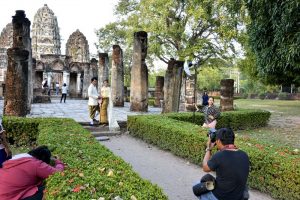
Negative impacts to a destination include economic leakage, damage to the natural environment and overcrowding to name a few.
Positive impacts to a destination include job creation, cultural heritage preservation and interpretation, wildlife preservation landscape restoration, and more.
Sustainable tourism is defined by the UN Environment Program and UN World Tourism Organization as “tourism that takes full account of its current and future economic, social and environmental impacts, addressing the needs of visitors, the industry, the environment and host communities.”
Additionally, they say that sustainable tourism “refers to the environmental, economic, and socio-cultural aspects of tourism development, and a suitable balance must be established between these three dimensions to guarantee its long-term sustainability” ( UNEP & UNWTO , 2005: 11-12. Making Tourism More Sustainable – A Guide for Policy Makers ).
Definition of Ecotourism
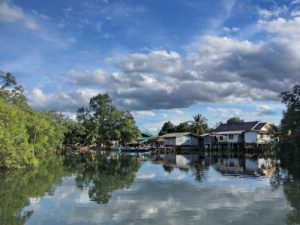
Fennell described it as such: “Ecotourism is a sustainable form of natural resource-based tourism that focuses primarily on experiencing and learning about nature, and which is ethically managed to be low-impact, non-consumptive, and locally-oriented. It typically occurs in natural areas, and should contribute to the conservation or preservation of such areas” (Fennell, 1999: 43. Ecotourism: An Introduction ).
The Mohonk Agreement (2000) , a proposal for international certification of Sustainable Tourism and Ecotourism, saw ecotourism as “sustainable tourism with a natural area focus, which benefits the environment and communities visited, and fosters environmental and cultural understanding, appreciation, and awareness.”
The ecotourism definition by the Global Ecotourism Network (GEN) : “Ecotourism is responsible travel to natural areas that conserves the environment, sustains the well-being of the local people, and creates knowledge and understanding through interpretation and education of all involved (visitors, staff and the visited).”
Definitions of Responsible Travel
Responsible Travel refers to the behavior of individual travelers aspiring to make choices according to sustainable tourism practices. The behaviors usually align with minimizing the negative impacts and maximizing positive ones when one visits a tourism destination.
Travelers that want to learn more about how to be a responsible traveler can visit the section on the GSTC website For Travelers .
Summary of the difference between Sustainable Tourism, Ecotourism, and Responsible Travel
Ecotourism is a niche segment of tourism in natural areas.
Sustainable Tourism does not refer to a specific type of tourism, rather it is an aspiration for the impacts of all forms of tourism to be sustainable for generations to come.
Responsible Travel is a term referring to the behavior and style of individual travelers. The behaviors align with making a positive impact to the destination rather than negative ones.
Sustainable Tourism and the GSTC Criteria

They are the result of a worldwide effort to develop a common language about sustainability in tourism. They are categorized in four pillars: (A) Sustainable management; (B) Socioeconomic impacts; (C) Cultural impacts; (D) Environmental impacts.
These standards were built on decades of prior work from industry experts around the globe. During the process of development, they were widely consulted in both developed and developing countries. They reflect our goal in attaining a global consensus on sustainable tourism.
The process of developing the Criteria was designed to adhere to the standards-setting code of the ISEAL Alliance. The ISEAL Alliance is the international body providing guidance for the management of sustainability standards in all sectors. That code is informed by relevant ISO standards .
Finally, the GSTC Criteria are the starting goals that businesses, governments, and destinations should achieve. Tourism destinations each have their own culture, environment, customs, and laws. Therefore, the Criteria are designed to be adapted to local conditions and supplemented by additional criteria for the specific location and activity.
There are three sets of Criteria
- GSTC Industry Criteria = relates to the sustainable management of private sector travel industry, focusing currently on Hotels and Tour Operators.
- GSTC Destination Criteria = relates to sustainable management of Tourism Destinations.
- GSTC MICE Criteria = relates to sustainable management of Venues, Event Organizers and Events & Exhibitions.
Learn more about Sustainable Tourism
Reading one article is not enough. The GSTC website offers those interested in learning more about sustainable tourism the needed resources. Make sure you visit the relevant pages for you:
- For Hotels & Accommodations
- For Tour Operators
- For Governments & Destinations
- For Corporate and Business Travel
You can also join one of the regular GSTC courses:
- Want to gain in-depth knowledge of the GSTC Criteria and understand sustainable tourism? The GSTC Sustainable Tourism course is for you.
- Are you a hotelier or work in the hospitality sector? GSTC Sustainable Hotel course
GSTC Sustainable Tourism Training Schedule
✓ Gain in-depth knowledge of the GSTC Criteria, the global standard for sustainability in travel and tourism. ✓ Make informed decisions on how to implement sustainability practices for your company or destination. ✓ Get ready for developing viable and actionable sustainable tourism policies and practices for your organization
I’ve participated in the course to get a comprehensive overview of destination sustainability criteria. Much more than this, the course gave me the up-to-date analysis of current trends, and a huge number of relevant cases from the destinations, the industry networks and the service providers. I strongly recommend to attend the course.

My course facilitator and teacher (Ayako and Antje) went above and beyond to answer our questions and provide us with additional resources. The course content (the GSTC Criteria) was delivered in an understandable and organized way. Learning the GSTC Criteria and how it applies to our own projects, businesses, and destinations is integral to anyone wanting to do any kind of work in the future centered around travel. I appreciated that the course was delivered in an interactive way over Zoom, and not just something we watched on YouTube. For me, being able to interact with fellow students from around the world, was a big plus. Was well worth it, and I highly recommend the course!

This course has been very relevant and provides in-depth knowledge of GSTC criteria for sustainable practices for destinations as well as the travel industry [with] plenty of real life examples and share links to plenty of reading material throughout the course. … As we move forward during these difficult COVID times, learning our lessons on the damage to nature, it becomes all the more important for industry professionals to get trained and step up efforts to embrace sustainability in all aspects of tourism. Hence, I recommend this course to all industry professionals.

This course enables participants to connect with the GSTC team directly, over an easy to use platform and network around the world. Using real life examples and detail in each of the 4 sections of the GSTC.

The GSTC training was a great way to connect, network, and engage in mind-broadening and eye-opening discussions with others in the diverse field of sustainable tourism. I would highly recommend this as a starting point for anyone interested in the journey of regenerative and sustainable tourism.

The course was great and the on- the-go discussions added great value to keep abreast of trends from across the globe. Participants from various parts of the world brought in their experiences and made the course very interesting.

Hearing about actual destinations applying Sustainable Tourism initiatives and learning from real situations practicing Sustainable Tourism, as well as the related successes and challenges, was very informative and valuable. My favorite part was the unexpected camaraderie from and connections with the other participants. I genuinely enjoyed the online discussion, sharing of ideas, and breakout groups and, overall, meeting so many others who she a passion for Sustainable Tourism. Thank you, GSTC, for a great course!

A complete holistic approach to sustainable tourism. The comprehensive lessons given each week break down the GSTC Criteria and are paired with practical examples, international experts and ‘hands on’ online workshops. The opportunity to discuss and share insights from all the participants around the world not only contributes to my own knowledge but to also my professional network. I highly recommend this course for anyone discovering sustainable tourism.

The course is quick and handy way to immerse in the issues of Sustainability in Tourism and a great kick start in starting your own business or destination program. I could have had the course even longer and especially the live sessions were great to get to know some of the other participants and share their knowledge and experiences – best practices are the best way to get started and to get valuable information. Highly recommended!

The course was so informative and presented in an engaging & interesting way. The examples & speakers gave us a lot to think about and many tangible ways that we can make a difference in our travel business. Thank you!

This course has given me an approach to the GSTC Criteria, where the basic and complete structure to move forward on sustainable paths is visualized. The reflections generated through real examples, discussions and available material are key to better internalize what sustainability means. Ideas applicable to our business and our work area appear during the course that contribute positively to one’s reality. I will recommend this course, for its contribution to the objective, honest and constructive understanding of what sustainability is.

I can only highly recommend the course for every travel and tourism professional- it is a great motivational boost to get into action and helps me support destinations in bringing the idea of destination stewardship – an inclusive and holistic approach – alive. We do not need more and more tourists, we need sustainable tourism.

Taking the GSTC training at this point in time was extremely valuable. It gave me a sustainable tourism framework to help assess what I’ve been able to accomplish and also consider the role that sustainable experiential travel may mean as we begin to inch our way out of the world of zero tourism towards something likely new and different. One other great benefit of the training was starting to get acquainted and sharing with other participants and instructors from around the globe. These connections will be valuable for a very long time to come.

I found this online course well structured and enjoyable. The trainers are really inspiring, extremely knowledgeable about the field and very supportive. The live online sessions give a great introduction to key topics, and there are online lessons, discussion forums and reference material to deepen knowledge. I feel like I have access to so much wisdom, and it is great to be part of a global community of sustainable tourism practitioners.
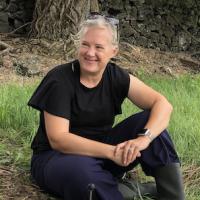
Thank you GSTC for such a great course. The content was relevant, the case studies were inspiring and the course structure was spot on! I can’t wait to take my learnings and inspiration and activate it across regional destinations in Australia. Keep up the great work.

What I liked the most about this course is the well-defined structure, the opinion sharing with online classmates, and the up-to-date topics. It makes the experience much more effective and enjoyable.

Excellent course that sets the foundations for sustainable tourism practice.I was very new with sustainable tourism and now after the course I have very solid understanding and skills to apply to my job. In addition, the amazing network of professionals sharing ideas is another great tool!
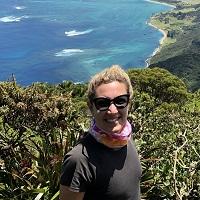
This course provided me with a thorough understanding of how to implement sustainable travel practices. I will definitely integrate information from this training into my work with travel organizations and destinations to help them achieve short-term progress through a long-term strategy.

The GSTC training provides a comprehensive overview of key indicators for a holistic view of sustainable tourism. The training provided an excellent opportunity to network with other tourism professionals, and to share ideas, develop plans, and comment on sustainable tourism initiatives that are being implemented in a diverse array of locations globally. I’m grateful for the connections that I made and for the helpful feedback on ideas for improving sustainability in several operations.

Useful and inspiring! The way the course is organised with lots of practical experience from colleagues in the tourism sector is indeed the most useful and interesting part of the course, [making it easier] to approach the GSTC criteria.

The GSTC course was really great to me because it gave me an in-depth knowledge about sustainable tourism. The combination of the criteria explanation and the presentation from other experts was really great, as it gave us the know-how, lots of samples and case studies. Before joining this course, I had heard about the term sustainable tourism many times, but [was not sure] what it is all about and how we can achieve it. I am glad to have gained the bigger picture of sustainable tourism. I’m developing my village to be a community based tourism destination, and now I can adopt and apply the standard locally.
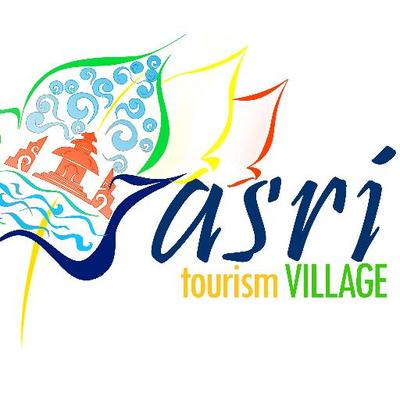
A great training program that gives the participants a thorough understanding on the sustainable management of both destinations and individual businesses. Anyone from the industry – from the business or the government side – should understand the bigger picture of the destination level management as well as the industrial level so that both public and private sectors can work together for a more sustainable tourism industry.

The GSTC Sustainable Tourism Training Program provided an up-to-date perspective and holistic approach on the topic. I really enjoyed taking part in the group discussions and hearing about the realities of other destinations and their challenges.

I think the training was very useful and gave me many insights that I will use in my daily work to develop more sustainable tourism. The training class was also a good group for networking.

The Global Sustainable Tourism Council (GSTC) is the most widely recognized institution for offering sustainability courses for tourism professionals.

This is a one-of-a-kind course that provides the tools in getting you started. Not to mention, you’re also collaborating with people and organizations across the globe facing similar challenges. The feedback from fellow students was invaluable and honestly, what better way to tackle some big challenges related to the environment than with people from different countries and backgrounds. I’d take this course again just for those connections!

The [GSTC course] has been a remarkable learning experience and a great introduction to sustainable tourism. The combination of online resources, discussion forums, weekly live events with guest presenters provides a deeper understanding and useful tools in sustainable tourism. The trainers have incredible expertise in both tourism and sustainability and share their knowledge and passion about current sustainability practices. I would highly recommend this course to everyone involved in the tourism industry or have a interest in sustainable tourism.
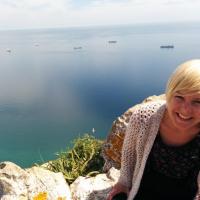
An excellent programme run by well qualified professional staff and trainers. The guest speakers were world class and materials industry leading. A definite must for any tourism professional who is serious about making sustainable impacts for the betterment of our industry.

Amazing learning experience. Exceeded my expectations by far. Excellently organized and facilitated. Great dynamics in discussions with course participants – so much to learn from. Highly valuable best practices and interactive modules really made the best learning experience I had until now! It really motivated and inspired me to continue on the road of global sustainable tourism.

The GSTC Sustainable Tourism Training gave me the tools and network to be able to work for a more sustainable tourism sector in the area where I’m based (South Sweden). The structure with the four principles makes it easy to follow and to discuss also outside the GSTC world. The examples from the other participants were great, and we will continue sharing good and bad examples from destinations all over the world.

To work on sustainability is a never-ending story and can be overwhelming at times. The GSTC training supports a structured approach toward continuous improvement. It provides applicable tools to evaluate our sustainability performance and guidance for setting long-term strategies. It allows you to break down this massive task into achievable working packages.

The GSTC training was a great first touch point for me into the world of sustainable tourism and destination management. I loved hearing case studies from around the world and real life examples on how the GSTC criteria can make a difference. The course has enabled me to start building on these criteria within my job.

The training has enable me to go through all the GSTC Criteria thoroughly with better knowledge of sustainable tourism standard and practices. It will be useful as basic guidelines for the Foundation to use these Criteria, as the destination wants to embark in becoming a sustainable tourism destination, aiming to become GSTC-Certified.

I would definitely recommend GSTC training to absolutely everyone in the tourism industry. The entire [GSTC] framework is extremely useful and important – a framework of values and ideas that is evolving, and that is meant for us a roadmap to make things better for people and companies that may be starting from different points in the journey towards sustainability.

The quality of this training was really first class; materials, presentations, trainer support, resources and discussions. The forum helped keep everything relevant and up to date, and I also liked the format of the live events. All guest presenters were excellent; I liked that they were sharing real life experiences and not just theoretical examples. From each and every live presentation I gained ideas, reinforcements to my own experiences and enthusiasm for what I and my colleagues are doing in our own part of the world.

The STTP programme has been a good introduction to the principles of sustainable tourism. It was a good mix of presentations and cases of sustainable tourism in real-life, insights from experts from various countries and across tourism sectors and explanation of key GSTC criteria. Participants were encouraged to share their experiences and observations through discussion forums and presentations, which made the sessions more lively. The final exam is recommended for those who wish to test their ability to put these principles to practice. I highly recommend this course to tourism industry professionals wishing to incorporate sustainable tourism management at work.

The GSTC training provided me with a deep understanding of the criteria. My fellow classmates were industry experts in various sectors from around the world, bringing the criteria to life with valuable examples/discussions of how they have implemented the very practices we were learning.

My first impression was the organization, it was perfect regarding the admin efforts and the learning tools. The course materials were really useful, as well as the live sessions from which I gained a deep understanding and experience from the other participants. I really want to have the chance to thank all the team who was involved, and of course I would recommend people working in the tourism industry to join this course

The training gave me a clear understanding of the challenges we face and the actions to take to make sustainability effective, [covering] each of the main areas in a systematic way with enough technical detail for those who needed it, without losing the less technical trainees (like myself) who needed to understand the broad overview of sustainable tourism practices

The overview of standards, coupled with best practice and real world examples has been very beneficial for my work in destination management and responsible tourism development. The ability to meet likeminded industry colleagues, who are working in this arena was also highly valuable.

Share This Story, Choose Your Platform!
Related posts.

Petra joins GSTC

Tobu Top Tours joins GSTC

Travel Nevada joins Global Sustainable Tourism Council
National Geographic content straight to your inbox—sign up for our popular newsletters here

Coral reforestation helps restore desolated reefs around Landaa Giraavaru Island on Baa Atoll in the Republic of Maldives.
For travelers, sustainability is the word—but there are many definitions of it
Most people want to support sustainable tourism, even though the concept remains fuzzy.
The word “overtourism” is a relatively new term—but its novelty has not diminished the portent of its meaning: “An excessive number of tourist visits to a popular destination or attraction, resulting in damage to the local environment and historical sites and in poorer quality of life for residents,” according to the Oxford Dictionary .
As travel recovers from pandemic lows, travelers are once again experiencing the consequences of overtourism at enticing, but crowded, destinations. The UN World Tourism Organization, along with public and private sector partners, marks September 27 as World Tourism Day and uses this platform to discuss tourism’s social, political, economic, and environmental impacts.
This day highlights the importance of sustainable tourism —a framework for engaging travelers and the travel industry at large in supporting goals that include protecting the environment, addressing climate change, minimizing plastic consumption , and expanding economic development in communities affected by tourism.
Getting the facts
A National Geographic survey of 3,500 adults in the U.S. reveals strong support for sustainability. That’s the good news—but the challenge will be helping travelers take meaningful actions. According to the survey—which was conducted in 2019—while 42 percent of U.S. travelers would be willing to prioritize sustainable travel in the future, only 15 percent of these travelers are sufficiently familiar with what sustainable travel actually means.
( Learn about how to turn overtourism into sustainable global tourism .)
In the National Geographic survey, consumers most familiar with sustainable travel are young: 50 percent are 18 to 34 years old. Among travelers who understand the sustainable travel concept, 56 percent acknowledge travel has an impact on local communities and that it’s important to protect natural sites and cultural places.
The survey has informed National Geographic’s experiential travel and media businesses and sparked conversations for creating solutions around sustainability. Our travel content focuses on environmentally friendly practices, protecting cultural and natural heritage, providing social and economic benefits for local communities, and inspiring travelers to become conservation ambassadors. In short, we see every National Geographic traveler as a curious explorer who seeks to build an ethic of conserving all that makes a destination unique.
Building better practices
National Geographic Expeditions operates hundreds of trips each year, spanning all seven continents and more than 80 destinations. Rooted in the National Geographic Society ’s legacy of exploration, the company supports the Society's mission to inspire people to care about the planet by providing meaningful opportunities to explore it. Proceeds from all travel programs support the Society’s efforts to increase global understanding through exploration, education and scientific research.
National Geographic Expeditions offers a range of group travel experiences, including land expeditions, cruises, and active adventures, many of which take place around eco-lodges that are rigorously vetted for their sustainability practices.
These independent lodges incorporate innovative sustainability practices into their everyday operations, including supporting natural and cultural heritage, sourcing products regionally, and giving back to the local community.
For example, South Africa’s Grootbos Lodge launched a foundation to support the Masakhane Community Farm and Training Centre. Through this program, the lodge has given plots of land to local people who have completed the training, increasing their income and access to local, healthy foods; so far the program has benefitted more than 138 community members.
As a media brand, National Geographic encourages travelers to seek out and support properties that embrace a mission to help protect people and the environment. Not only do these accommodations make direct and meaningful impacts in their own communities, but staying at one helps educate travelers in effective ways to preserve and protect the places they visit.
Supporting sustainability
The travel industry is crucially dependent on the health of local communities, environments, and cultures. As many experts note, we need to invest in the resiliency of places affected by overtourism and climate change to achieve sustainable tourism.
( Should some of the world’s endangered places be off-limits to tourists ?)
National Geographic’s coverage stresses the importance of reducing our carbon footprint and encourages travelers to step off the beaten path and linger longer, respect cultural differences and invest in communities, reconnect with nature and support organizations that are protecting the planet. Here are 12 ways to travel sustainably , reported by our staff editors.
Storytelling can help by highlighting problems brought on by tourism and surfacing practices and technologies to mitigate negative impacts. A key goal of our storytelling mission at National Geographic Travel is to dig deeper into the topic of sustainable tourism and provide resources, practical tips, and destination advice for travelers who seek to explore the world in all its beauty—while leaving behind a lighter footprint.
Become a subscriber and support our award-winning editorial features, videos, photography, and much more.
For as little as $2/mo.
Related Topics
- SUSTAINABILITY
- SUSTAINABLE TOURISM
- ENVIRONMENT AND CONSERVATION
- PEOPLE AND CULTURE
- CLIMATE CHANGE
You May Also Like

6 tips to make your next beach trip more sustainable

Can tourism positively impact climate change in the Indian Ocean?

B Corps can help us travel more responsibly—but what are they?

6 eco-conscious alpine resorts around the world

Welcome to Hydra, the Greek island that said no thanks to cars
- Environment
- Paid Content
History & Culture
- History & Culture
- Mind, Body, Wonder
- Terms of Use
- Privacy Policy
- Your US State Privacy Rights
- Children's Online Privacy Policy
- Interest-Based Ads
- About Nielsen Measurement
- Do Not Sell or Share My Personal Information
- Nat Geo Home
- Attend a Live Event
- Book a Trip
- Inspire Your Kids
- Shop Nat Geo
- Visit the D.C. Museum
- Learn About Our Impact
- Support Our Mission
- Advertise With Us
- Customer Service
- Renew Subscription
- Manage Your Subscription
- Work at Nat Geo
- Sign Up for Our Newsletters
- Contribute to Protect the Planet
Copyright © 1996-2015 National Geographic Society Copyright © 2015-2024 National Geographic Partners, LLC. All rights reserved

Hand-Picked Top-Read Stories

Vision Zero: A Comprehensive Guide
- Environment
- Transportation

Advantages of Public Transport: 20 Reasons to Make the Shift Today
- Planet earth

CNG Fuel: A Comprehensive Guide
Trending tags.
- Zoning Laws
- Zero-waste living
- zero-waste kitchen
- workplace safety
- workplace charging
- WineTasting
- Sustainable Tourism
Sustainable Tourism Practices and Destinations: Examples from Around the World
Sustainable Tourism Practices: Sustainable tourism is a growing trend in the travel industry that focuses on minimizing the environmental and social impact of tourism while providing economic benefits to local communities. From eco-friendly accommodations to responsible travel practices, there are many ways that tourism can be made more sustainable. Around the world, destinations and businesses are implementing sustainable tourismthat support conservation, reduce carbon emissions, and promote local cultural heritage. These efforts not only benefit the planet, but also provide a unique and authentic travel experience for visitors. In this context, we will explore some of the sustainable tourism and destinations from around the world that are leading the way in promoting responsible and ethical tourism.
Here are 40 examples of sustainable tourism and destinations from around the world:
- The Galapagos Islands, Ecuador – A protected wildlife sanctuary that limits visitor numbers to prevent environmental damage and promote sustainable tourism.
- Costa Rica – A country that has made a strong commitment to sustainable tourism, with a focus on eco-tourism, community-based tourism, and conservation efforts.
- Bhutan – A country that measures its economic success through a Gross National Happiness index, which includes the protection of the environment and cultural heritage.
- Norway – A country that is known for its sustainable tourism, including eco-friendly transportation, green energy, and sustainable tourism certification programs.
- The Netherlands – A country that is promoting sustainable tourism through initiatives such as green hotels, bike-friendly cities, and nature conservation programs.
- New Zealand – A country that has a strong focus on sustainable tourism, including eco-tourism, conservation efforts, and responsible travel practices.
- The Amazon Rainforest, Brazil – A region that has adopted sustainable tourism to promote conservation and support local communities.
- The Great Barrier Reef, Australia – A protected marine park that promotes sustainable tourism, such as reducing carbon emissions and protecting the natural environment.
- Kenya – A country that has implemented sustainable tourism, including wildlife conservation, community-based tourism, and eco-friendly lodges.
- Iceland – A country that is promoting sustainable tourism through eco-friendly transportation, renewable energy, and eco-certification programs.
- South Africa – A country that is known for its conservation efforts, including wildlife protection and community-based tourism.
- The Azores, Portugal – A group of islands that is promoting sustainable tourism through eco-tourism, whale watching, and nature conservation programs.
- The Serengeti, Tanzania – A protected wildlife sanctuary that promotes responsible tourism practices, such as reducing carbon emissions and supporting local communities.
- The Cook Islands, Pacific Ocean – A group of islands that is committed to sustainable tourism, including protecting the environment and supporting local communities.
- Thailand – A country that has implemented sustainable practices, including community-based tourism, wildlife conservation, and responsible travel.
- The Faroe Islands, Denmark – A group of islands that is promoting sustainable tourism through eco-friendly transportation, sustainable seafood, and nature conservation programs.
- The Lake District, England – A protected national park that promotes sustainable tourism, such as reducing carbon emissions and supporting local communities.
- The Annapurna Region, Nepal – A region that is promoting sustainable tourism through community-based tourism, conservation efforts, and responsible trekking practices.
- The Maasai Mara, Kenya – A protected wildlife reserve that promotes sustainable practices, such as reducing carbon emissions and supporting local communities.
- The Blue Mountains, Australia – A protected national park that promotes sustainable tourism practices, such as reducing carbon emissions and supporting local communities.
- Guna Yala, Panama – A protected indigenous territory that promotes sustainable tourism, such as supporting traditional livelihoods and preserving cultural heritage.
- The Isle of Eigg, Scotland – An island that is promoting sustainable tourism through renewable energy, eco-friendly accommodations, and community-based tourism initiatives.
- The San Blas Islands, Panama – A group of islands that is promoting sustainable tourism through eco-tourism, community-based tourism, and responsible travel practices.
- The Burren, Ireland – A protected national park that promotes sustainable practices, such as reducing carbon emissions and supporting local communities.
- The Bay of Fundy, Canada – A protected marine park that promotes sustainable tourism practices, such as reducing carbon emissions and supporting local communities.
- The Lofoten Islands, Norway – An archipelago that is promoting sustainable tourism through eco-friendly transportation, responsible fishing, and community-based tourism initiatives.
- The Tongariro National Park, New Zealand – A protected national park that promotes sustainable tourism, such as reducing carbon emissions and supporting local communities.
- The Danube Delta, Romania – A protected wetland that promotes sustainable tourism practices, such as eco-tourism and responsible travel practices.
- The Douro Valley, Portugal – A region that is promoting sustainable tourism through eco-tourism, responsible wine tourism, and community-based tourism initiatives.
- The Lake Titicaca, Peru/Bolivia – A protected lake that promotes sustainable tourism, such as preserving cultural heritage and supporting traditional livelihoods.
- The Everglades, United States – A protected wetland that promotes sustainable tourism, such as reducing carbon emissions and supporting local communities.
- The Cinque Terre, Italy – A protected coastal area that promotes sustainable tourism practices, such as reducing carbon emissions and supporting local communities.
- The Mekong Delta, Vietnam – A region that is promoting sustainable tourism through eco-tourism, responsible travel practices, and community-based tourism initiatives.
- The Lake District, Chile – A protected national park that promotes sustainable tourism practices, such as reducing carbon emissions and supporting local communities.
- The Sinharaja Forest Reserve , Sri Lanka – A protected rainforest that promotes sustainable tourism, such as eco-tourism and responsible travel practices.
- The Jasper National Park, Canada – A protected national park that promotes sustainable tourism practices, such as reducing carbon emissions and supporting local communities.
- The Arctic, various countries – A region that is promoting sustainable tourism through eco-tourism, responsible travel practices, and nature conservation programs.
- The Torres del Paine National Park, Chile – A protected national park that promotes sustainable tourism, such as reducing carbon emissions and supporting local communities.
- The Sagarmatha National Park, Nepal – A protected national park that promotes sustainable tourism practices, such as eco-tourism and responsible trekking practices.
- The Monteverde Cloud Forest Reserve, Costa Rica – A protected cloud forest that promotes sustainable tourism practices, such as eco-tourism and nature conservation programs.
These are just a few more examples of the many destinations and businesses around the world that are adopting sustainable tourism. With a growing focus on responsible and ethical tourism, sustainable tourism is becoming an increasingly important industry worldwide.
Similar Articles
- Green Hiking
- How To Save Water
- What is an Eco Lodge?
Frequently Asked Questions About Sustainable Tourism Practices
What is sustainable tourism?
Sustainable tourism is a form of tourism that focuses on minimizing the environmental and social impact of travel while providing economic benefits to local communities.
What are some sustainable tourism practices?
Some sustainable tourism practices include supporting conservation efforts, reducing carbon emissions, promoting local cultural heritage, and supporting local communities through community-based tourism initiatives.
Why is sustainable tourism important?
Sustainable tourism is important because it helps to preserve natural and cultural resources, provides economic benefits to local communities, and promotes responsible and ethical travel practices.
How can travelers practice sustainable tourism?
Travelers can practice sustainable tourism by supporting eco-friendly accommodations, engaging in responsible travel practices, supporting local communities, and minimizing their carbon footprint.
What are some examples of sustainable tourism destinations?
Some examples of sustainable tourism destinations include national parks, protected areas, eco-tourism lodges, and community-based tourism initiatives.
How can tourism businesses implement sustainable tourism practices?
Tourism businesses can implement sustainable practices by reducing their carbon emissions, supporting local communities, promoting conservation efforts, and adopting eco-friendly practices.
What is community-based tourism?
Community-based tourism is a form of tourism that involves local communities in the tourism industry, providing economic benefits while preserving local culture and traditions.
What is responsible tourism?
Responsible tourism is a form of tourism that focuses on minimizing the environmental and social impact of travel while providing economic benefits to local communities and promoting cultural awareness.
What is the difference between sustainable tourism and ecotourism?
Sustainable tourism is a broader concept that encompasses all forms of tourism that are socially, economically, and environmentally responsible, while ecotourism is a specific form of tourism that focuses on nature-based experiences that support conservation efforts.
How does sustainable tourism benefit local communities?
Sustainable tourism benefits local communities by providing economic benefits through job creation and supporting local businesses, while also preserving cultural heritage and traditions.
How can tourists ensure they are practicing sustainable tourism?
Tourists can ensure they are practicing sustainable tourism by choosing eco-friendly accommodations, engaging in responsible travel practices, supporting local communities, and minimizing their carbon footprint.
What role do governments play in promoting sustainable tourism?
Governments play an important role in promoting sustainable tourism by establishing policies and regulations that support conservation efforts, promoting sustainable practices, and providing funding for sustainable tourism initiatives.
What are some challenges to implementing sustainable tourism practices?
Some challenges to implementing sustainable tourism practices include the high cost of implementing eco-friendly practices, lack of awareness among tourists, and limited resources in developing countries.
What is the role of tourism businesses in promoting sustainable tourism?
Tourism businesses play a critical role in promoting sustainable tourism by adopting eco-friendly practices, supporting conservation efforts, and engaging with local communities to ensure their economic benefits are sustainable.
What is the impact of sustainable tourism on the environment?
Sustainable tourism aims to minimize the impact of tourism on the environment by reducing carbon emissions, supporting conservation efforts, and promoting eco-friendly practices. This can have a positive impact on the environment by preserving natural resources and reducing pollution.
What is the role of tourists in promoting sustainable tourism?
Tourists have a crucial role to play in promoting sustainable tourism by supporting eco-friendly accommodations, engaging in responsible travel practices, supporting local communities, and minimizing their carbon footprint.
What is the role of local communities in sustainable tourism?
Local communities play a vital role in sustainable tourism by providing unique cultural experiences, supporting conservation efforts, and benefitting from the economic opportunities that tourism can bring. Sustainable tourism initiatives often involve working with local communities to ensure their voices are heard and their needs are met.
How can sustainable tourism help preserve cultural heritage?
Sustainable tourism can help preserve cultural heritage by supporting local cultural practices and traditions, promoting cultural awareness, and providing economic benefits to local communities. In doing so, it helps to maintain and celebrate cultural diversity and promote the value of cultural heritage.
What is the impact of sustainable tourism on the economy?
Sustainable tourism can have a positive impact on the economy by providing job opportunities, supporting local businesses, and promoting economic growth in tourism-dependent communities. It can also encourage investment in infrastructure and services, leading to long-term economic benefits.
What is the role of education in promoting sustainable tourism?
Education plays a critical role in promoting sustainable tourism by raising awareness among tourists, tourism businesses, and local communities. It can help to promote best practices, encourage responsible travel behavior, and foster a culture of sustainability.
How can technology be used to promote sustainable tourism?
Technology can be used to promote sustainable tourism by supporting digital platforms that provide information and resources for sustainable travel, reducing the need for paper-based materials and promoting more efficient and eco-friendly travel methods.
What is the role of sustainable tourism in climate change mitigation?
Sustainable tourism can contribute to climate change mitigation by promoting low-carbon travel options, reducing carbon emissions, and supporting conservation efforts that help to mitigate the impact of climate change on natural resources.
How can sustainable tourism be measured?
Sustainable tourism can be measured using a range of indicators, such as carbon emissions, waste reduction, water conservation, and economic impact. There are also several certification programs and sustainability standards that can be used to assess the sustainability of tourism businesses and destinations.
How can travelers support sustainable tourism initiatives?
Travelers can support sustainable tourism initiatives by choosing eco-friendly accommodations, engaging in responsible travel practices, supporting local communities, and minimizing their carbon footprint. They can also seek out sustainable tourism certification programs and support businesses that are committed to sustainable tourism practices.
- Carbon emissions
- community-based tourism
- conservation
- Cultural Heritage
- Eco-friendly travel
- ethical tourism
- Local Communities
- Responsible Tourism
Leave a Reply Cancel reply
Your email address will not be published. Required fields are marked *
Save my name, email, and website in this browser for the next time I comment.
Previous Post

Benefits of Ecotourism: How Responsible Travel Can Make a Positive Impact

20 Sustainable Tourism Practices and Destinations in India to Visit Now
Related posts.

- Eco Terms A to Z
Citizen Science: Empowerment Through Participation in Scientific Research

Renewable Energy Resorts: Sustainable Escapes for Eco-Conscious Travelers

Biodiversity: Exploring Nature’s Tapestry

Is it possible to be a ‘sustainable tourist’? 12 ways to make a positive impact on your travels
Facebook Twitter Print Email
After a period of plummeting tourism numbers during the pandemic, tourism is having a resurgence. This is good news for many workers and businesses, but it could be bad for the planet. Here is a selection of ways tourists can ensure that their holidays don’t harm the environment.
There are many positive aspects to tourism. Around two billion people travel each year for tourism purposes. Travel and tourism connect people and bring the world closer through shared experiences, cultural awareness and community building. It provides jobs, spurs regional development, and is a key driver for socio-economic progress.
However, there is often a downside; Many popular destinations are threatened by increasing pollution, environmental hazards, damage to heritage sites and overuse of resources. And that’s without factoring the pollution caused by travel to and from these destinations.
So, with that in mind here are some tips that will help you to enjoy your trip, and leave with the confidence that your favoured tourist destination will not be damaged by your presence, once you return home.
1. Ditch single-use plastics
Often used for less than 15 minutes, single-use plastic items can take more than 1,000 years to degrade. Many of us are switching to sustainable options in our daily lives, and we can take the same attitude when we’re on the road. By choosing reusable bottles and bags wherever you go, you can help ensure there is less plastic waste in the ocean and other habitats.
2. Be ‘water wise’
On the whole, tourists use far more water than local residents. With a growing number of places experiencing water scarcity, the choices you make can help ensure people have adequate access to water in the future. By foregoing a daily change of sheets and towels during hotel stays, we can save millions of litres of water each year.
3. Buy local
When you buy local, you help boost the local economy, benefit local communities, and help to reduce the destination’s carbon footprint from transporting the goods. This is also true at mealtimes, so enjoy fresh, locally grown produce every chance you get.
4. Use an ethical operator
Tour operations involve people, logistics, vendors, transportation and much more. Each link in the chain can impact the environment - positively or negatively. If you prefer to leave the planning to someone else, be sure to pick an operator that prioritizes the environment, uses resources efficiently and respects local culture.

5. ‘Please don’t feed the animals’
Sharing food with wildlife or getting close enough to do so increases the chances of spreading diseases like cold, flu and pneumonia from humans to animals. Also, when animals get used to receiving food from humans, their natural behaviours are altered, and they become dependent on people for survival. In some cases, it can also lead to human-animal conflict.
6. And don’t eat them either!
By creating the demand, consuming endangered or exotic animals leads to an increase in poaching, trafficking and exploitation of animals. Besides the harm done to the individual animal on your plate, irresponsible dining can contribute to the extinction of species already threatened by climate change and habitat loss. Keep this in mind when shopping for souvenirs as well, and steer clear of products made from endangered wildlife.
7. Share a ride
Transportation is a major contributor to the carbon footprint from tourism. Instead of private taxis, explore using public transportation like trains, buses and shared cabs. You can also ride a bicycle, which offers a convenient and cheaper way to explore and learn about a place.
8. Consider a homestay
Staying with a local resident or family is a nature-friendly option that allows you to get up close and personal with local culture and customs. Staying at local homestays can uplift communities by providing income while giving you a peek into different ways of life.

9. Do your homework
Before your travel, educate yourself about your destination. Doing so will allow you to better immerse yourself in local traditions and practices and appreciate things that might have gone unnoticed otherwise. With the right information, you can explore a destination in a more sensitive manner and surprise yourself with new adventures and discoveries.

10. Visit national parks and sanctuaries
Exploring nature and wildlife through national parks is an intimate way to learn about the animals and their ecosystems first hand. In some cases, your entrance fee supports conservation efforts that protect species and landscapes and preserve these natural spaces for future visitors to enjoy.
11. Don’t leave a trace
You can make a mark by not leaving a mark on your vacation destination. Put garbage in its place to avoid litter, and don’t remove or alter anything without permission. Let’s make sure we leave only soft footprints, and not the environmental kind.
12. Tell your friends
Now that you’re ready to travel in eco-friendly style, it’s time spread the word! Inform fellow travellers, friends and family about how sustainable tourism benefits local people by enhancing their livelihoods and well-being, and helps all of us by safeguarding our beautiful environment.

What Sustainable Tourism Is + Why It Is The Most Important Consideration Right Now
Sustainable tourism- have you heard of this term? Probably. That’s because the term ‘sustainability’ has become one of the most commonly used ‘buzzwords’ in contemporary society. But in reality, sustainable tourism is much more than the latest trend…
Today I am going to talk to you about the most important thing in travel- sustainability. While there are companies who claim to be ‘sustainable’ in order to achieve good PR and greenwashing happens more often than any of us wish to admit, the reality is that sustainability is literally a matter of life and death.
As highlighted by Guru David Attenborough, amongst many others, if we continue to act in the way that we are, the planet will not survive. And on a smaller scale and in a somewhat shorter time frame, if we continue to holiday in the way that we have been, tourism will not survive.
Sustainable tourism is not a choice, we have no choice- it MUST happen. And in this article I am going to tell you what this means for tourism industry workers, industry stakeholders and us- the tourists .
What is sustainable tourism?
Sustainable tourism definitions
Why is sustainable tourism important?
The principles of sustainable tourism
Environmental benefits, social benefits, economic benefits, preservation of natural and cultural heritage, education and awareness, improved travel experience, higher costs, limited tourist numbers, limited development, cultural changes, lack of standardisation, difficulty in implementation, footsteps ecolodge, the gambia, eden project, cornwall, reality tours and travel, india, dolphin discovery centre, western australia, rancho margot, costa rica, sustainable tourism: key takeaways, sustainable tourism faqs, sustainable tourism: conclusion.
Tourism is one of the world’s fastest growing and most important industries and is a major source of income for many countries. However, like other forms of development, tourism can also cause its share of problems.
Sustainable tourism, therefore, relies on the premise of taking care of the environment , society and the economy . Sustainable tourism principles intend to minimise the negative impacts of tourism, whilst maximising the positive impacts. However, this if often easier said than done.
A large majority of global travellers (87 percent) say that they want to travel sustainably, according to the Sustainable Travel Report released by Booking.com. But what does sustainable tourism actually mean and are we really being sustainable?
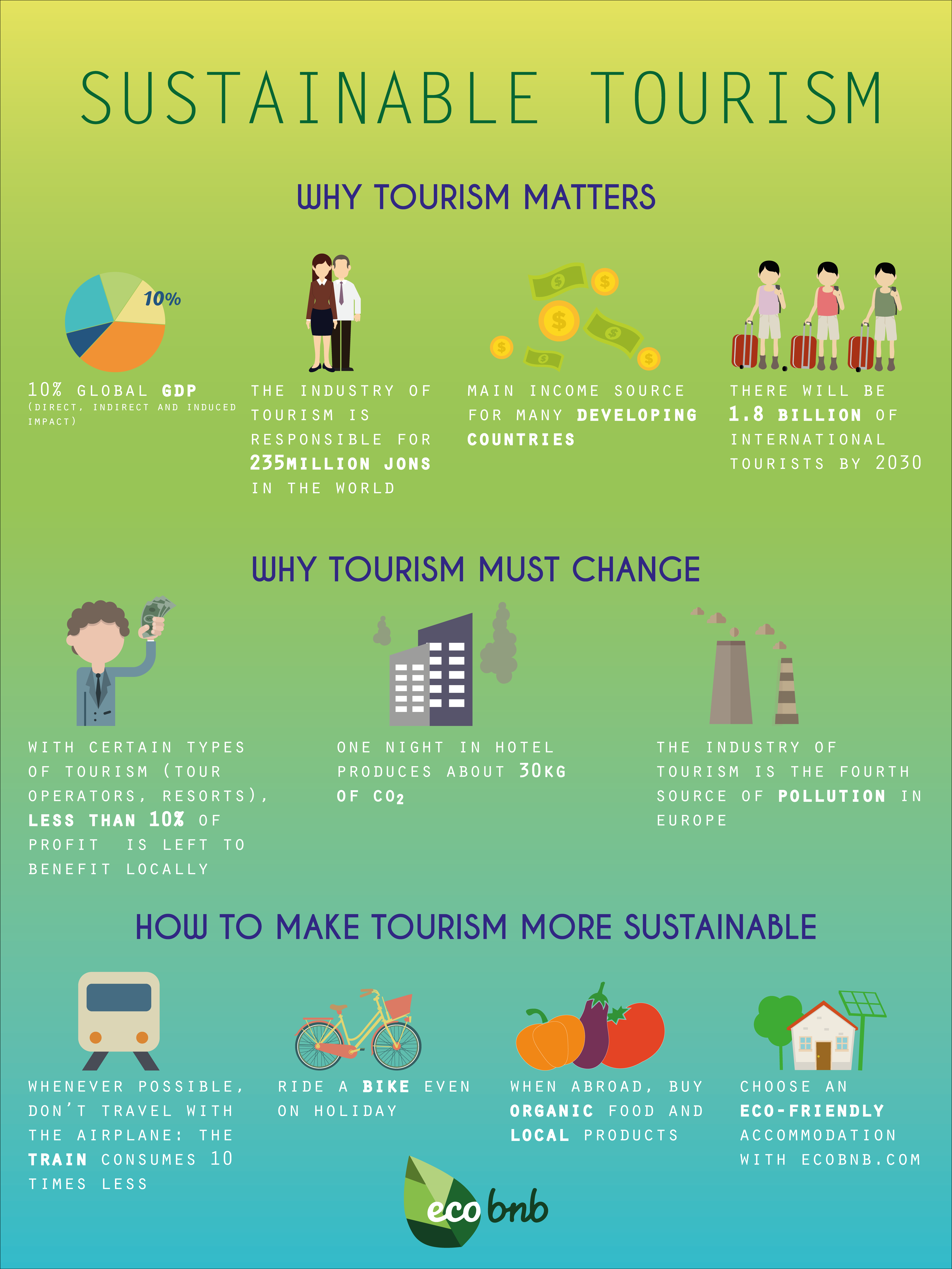
Sustainable tourism is a tourism form which has received significant attention in recent years, both by the media and the academic community. If you Google the term ‘sustainable tourism’ over 270,000,000 results are returned- that’s a lot!
The body of literature addressing sustainable practices in tourism has expanded exponentially. In fact, there is so much information on the concept of sustainable tourism nowadays that you take take an entire travel and tourism degree focussed on the sustainability management issues!
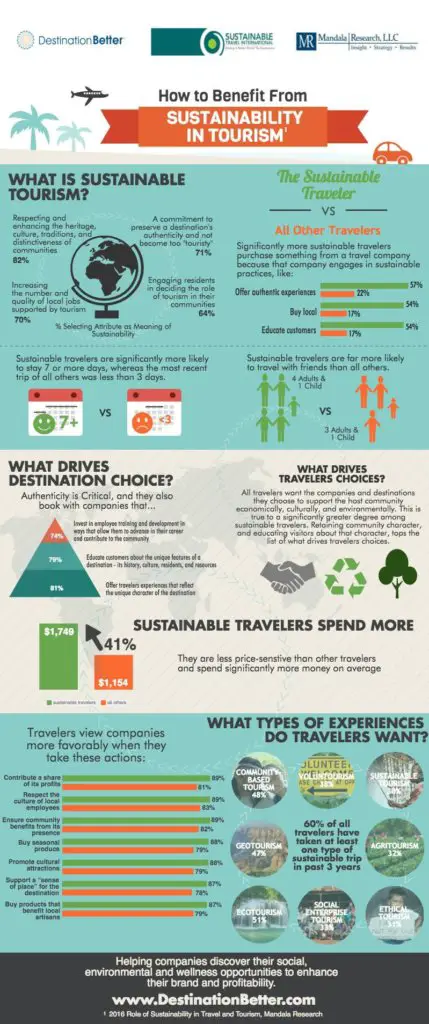
One of the earliest and most regarded definitions of sustainable tourism was published in The Brundtland Report , where it was defined as “development that meets the needs of the present without compromising the ability of future generations to meet their own needs”.
This sums it up pretty well to me. Think about it- if everyone (industry workers, government, tourists etc) continues to act in the way that they have been, will our grandchildren or great grandchildren have the same opportunities that we have had? For example, if litter is dropped on the beach and not cleared up, then future tourists will not want to visit that beach .
And if economic leakage is not controlled (i.e. when money spent by tourists leaves the country as a result of foreign owned businesses, imported produce etc) then the local people will see little or no benefits of the tourism and may become unwilling to work in the sector or even become antagonised by it. You see where I am going with this?
Another key definition of sustainable tourism is that of The United Nations World Tourism Organisation who state that sustainable tourism is “tourism that takes full account of its current and future economic, social and environmental impacts, addressing the needs of visitors, the industry, the environment and host communities”.
According to the The United Nations World Tourism Organisation , sustainable tourism should:
- Make optimal use of environmental resources that constitute a key element in tourism development, maintaining essential ecological processes and helping to conserve natural heritage and biodiversity.
- Respect the socio-cultural authenticity of host communities, conserve their built and living cultural heritage and traditional values, and contribute to inter-cultural understanding and tolerance.
- Ensure viable, long-term economic operations, providing socio-economic benefits to all stakeholders that are fairly distributed, including stable employment and income-earning opportunities and social services to host communities, and contributing to poverty alleviation.
As I pointed out, there is a wide breadth of tourism literature available in today’s market. Some of my favourite academic texts include Managing Sustainable Tourism by David Edgell and Sustainable Tourism by David Weaver. You can also find a wide range of research papers on Google Scholar .

Sustainable tourism influences positive movements that in return will create successful development by following strategies that allow the positive impacts to outweigh negative impacts.
As you can see from the graph below, the tourism industry is predicted to continue growing at a rapid rate. This means that any negative impacts caused as a result of tourism will also grow, thus indicating an urgent need for these to be carefully managed and mitigated through sustainable tourism practices.
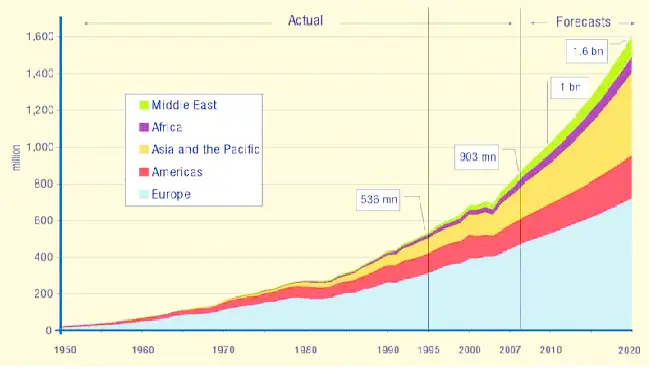
From the depths of the Amazon jungle to the Australian outback, there are few places in the world that have escaped the burgeoning growth of the travel and tourism industry. Unfortunately, in many cases, this has come at the expense of natural resources, local economies and indigenous populations.
A few years ago I visited a place called Dahab on my travels through Egypt , because I wanted visit the ‘Sharm el Sheik of 30 years ago. I plan to visit the ‘Thailand of days past’ by travelling to Myanmar and I chose the ‘less trodden’ path when climbing Mount Kilimanjaro .
Areas untouched by tourism are becoming more difficult to find. But more worryingly, areas that are untainted or undamaged by tourism are also becoming less common.
If we want to preserve the very things that it is we are going to see (the beach, the mountain, the wildlife etc), then we need to behave responsibly and sustainably.

T he Worldwide Fund for Nature (WWF) and Tourism Concern (1991) outline 10 principles for sustainable tourism. These are outlined below:
- Using resources sustainably. The conservation and sustainable use of resources- natural, social and cultural – is crucial and makes long-term business sense.
- Reducing over-consumption and waste. Reduction of over-consumption and waste avoids the costs of restoring long-term environmental damage and contributes to the quality of tourism.
- Maintaining biodiversity. Maintaining and promoting natural, social and cultural diversity is essential for long-term sustainable tourism and creates a resilient base for the industry.
- Integrating tourism into planning. Tourism development which is integrated into a national and local strategic planning framework and which undertake environmental impact assessments increases the long-term viability of tourism.
- Supporting local economies. Tourism that supports a wide range of local economic activities and which takes environmental costs and values into account, both protects these economies and avoids environmental damage.
- Involving local communities. The full involvement of local communities in the tourism sector not only benefits them and the environment in general but also improves the quality of the tourism experience.
- Consulting stakeholders and the public. Consulting between the tourism industry and local communities, organizations and institutions are essential if they are to work alongside each other and resolve potential conflicts of interest.
- Training staff. Staff training which integrates sustainable tourism into work practices, along with recruitment of personnel at all levels, improves the quality of the tourism product.
- Marketing tourism responsibly. Marketing that provides tourists with the full and responsible information increases respect for the natural, social and cultural environments of destination areas and enhances customer satisfaction.
- Undertaking research. Ongoing research and monitoring by the industry using effective data collection and analysis are essential to help solve problems and to bring benefits to destinations, the industry, and consumers.
Benefits of sustainable tourism
Sustainable tourism has many, many benefits. In fact, many would argue that implementing sustainable tourism is not a choice at all, it is essential. But to summarise, here are the key advantages of sustainable tourism:

Sustainable tourism promotes the conservation and protection of natural resources and biodiversity, reducing the negative impacts of tourism on the environment. It also encourages the use of eco-friendly transportation and accommodations, reducing carbon footprint and other pollutants.
Sustainable tourism can contribute to poverty reduction by creating job opportunities and income for local communities. It also promotes cultural understanding and respect by engaging tourists in local cultures and traditions.
This type of tourism can be a profitable and economically viable industry, contributing to economic growth and development. It supports local businesses and economies by promoting local products and services.
Sustainable tourism can help to preserve natural and cultural heritage sites for future generations by promoting responsible tourism practices and supporting conservation efforts.
Sustainable tourism can raise awareness and educate people about environmental and social issues, and encourage behaviour change towards more sustainable practices. It also provides educational opportunities for tourists to learn about local cultures and traditions.
- Sustainable tourism can lead to a more meaningful and authentic travel experience for tourists, as they can engage with local communities and cultures in a responsible way.
Overall, sustainable tourism can benefit both tourists and local communities by promoting responsible and sustainable tourism practices that respect the environment, society, and economy.
Disadvantages of sustainable tourism

While sustainable tourism has many benefits, there are also some potential disadvantages to consider. These include:
Sustainable tourism often requires more investments in eco-friendly technologies and practices, which can increase the costs for tourism businesses and potentially make it more expensive for tourists.
Sustainable tourism often requires limiting the number of tourists to reduce negative impacts on the environment and local communities, which can limit the economic benefits for tourism businesses and potentially reduce access for some tourists.
Sustainable tourism practices may require limiting the development of tourism infrastructure in certain areas to protect natural and cultural heritage sites, which can limit economic growth and development opportunities for local communities.
Sustainable tourism may require changes in local cultural practices and traditions to accommodate the needs of tourists, which can potentially lead to the loss of cultural erosion and loss of heritage.
Sustainable tourism practices can vary widely across destinations and tourism businesses, which can lead to inconsistencies in quality and standardisation, potentially reducing the overall effectiveness of sustainable tourism practices.
Ever heard of the term ‘easier said than done’? Sustainable tourism can be difficult to implement and manage, requiring partnerships between different stakeholders and long-term planning and management.
It’s important to note, however, that these potential disadvantages can be mitigated through careful tourism planning , collaboration, and monitoring to ensure that sustainable tourism practices are effective and beneficial for all stakeholders involved.
Examples of sustainable tourism
It’s not difficult to be a sustainable tourist , the biggest problem is a general lack of awareness amongst many tourists. If you want to learn more about how to be a sustainable traveller I recommend this book- How to be a highly Sustainable Tourist: A Guidebook for the Conscientious Traveller .
There are so many wonderful examples of sustainable tourism throughout the world! I have visited a few and I have lots more on my bucket list. Here are a few of my favourite examples.
My first example of sustainable tourism is Footsteps Ecolodge, which I visited back in 2010.
David, the Founder of Footsteps Ecolodge expresses how when he took a relatively cheap trip to The Gambia, he discovered that the staff at his booked hotel were only earning on average £1 per day. David felt guilty for enjoying a holiday knowing that the locals were receiving little or no economic benefits at all from hosting him.
David went on to develop Footsteps Ecolodge, with a mission to improve The Gambia’s trade through responsible tourism and therefore encourages sustainable development. In fact, one of his goals has led footsteps to employ only from the local village and buy only local produce.
I loved visiting this ecolodge. It has many environmentally friendly initiatives, ranging from solar powered electricity to composting toilets. It is based far away from the main tourist areas, providing a unique and authentic holiday experience. After spending a few days in the main tourist resort of Kotu, I was happy to exchange the evening chatter in the restaurants for the humming of grasshoppers and the beach bar music for the gentle sounds of waves.
You can read more on David’s story and the story behind Footsteps Ecolodge here.
The Eden Project is another great example of sustainable tourism.
It was built to demonstrate the importance of plants to people and to promote the understanding of vital relationships between plants and people. It is a huge complex that welcomes a wide range of tourists from the UK and overseas. In 2017, the project attracted more than o ne million visitors.
The project in fact has annual sustainability reports, monitoring its sustainable impact year on year.
Reality Tours and Travel’s mission is to provide authentic and thought-provoking local experiences through their tours and to use the profits to create change in Indian communities.
Reality Tours and Travel is a social catalyst and works towards profit sharing programs. 80% of their profits go directly to Reality Gives which runs high quality education programs in areas where their tours work.
Reality Tours and Travel now welcomes over 15,000 guests each year and employs over 50 members of staff.
The Dolphin Discovery Centre begun when Mrs Evelyn Smith begun to feed a group of dolphins near her home. Following her discovery of the dolphin grouping, specialists were brought in to monitor and study the local dolphins.
A few years later, the Dolphin Discovery Centre allowed tourists and community members to interact with the dolphins in hope they would understand and enjoy the marine mammals.
In brief, the Dolphin Discovery Centre Adopt a Dolphin Program supports the conservation of dolphins and the broader marine environment.
To date, the Dolphin Discovery Centre not only conserves dolphins, the centre also conserves turtles too. Learn more on adopting a dolphin or turtle with the Dolphin Discovery Centre here.
Ranch Margot is exactly what it sounds, a ranch located in Costa Rica. It all begun in 2004 when the founder of Rancho Margot, Juan Sostheim, purchased 400 acres of pasture. Despite the land being cleared of all vegetation, Juan Sostheim had a vision to grow sustainable food and raising animals.
Today, Rancho Margot focuses specifically on sustainable production and living, from the food they delivery to their energy production and the transportation used. Read more on Rancho Margot here.
Rancho Margot’s sustainable mission is in keeping with the Brundtland Report.
“To achieve and maintain sustainable operations, we work to find better ways to satisfy our needs without compromising future generations”
Whilst I didn’t get a chance got visit Rancho Margot during our travels through Costa Rica , it does look like a fantastic place to go and a great example of sustainable tourism.

So now that we understand a bit more about what sustainable tourism is and what it looks like in practice, lets re-cap the key points that we have covered in this article.
Sustainable tourism is an approach to tourism that seeks to minimise negative impacts on the environment, society, and economy, while maximising the positive impacts.
- Sustainable tourism can help to preserve natural and cultural heritage sites, and contribute to poverty reduction by creating job opportunities and income for local communities.
- Sustainable tourism promotes responsible travel practices, such as respecting local cultures, conserving natural resources, and reducing carbon footprint.
- Sustainable tourism requires partnerships between different stakeholders, including governments, local communities, NGOs, and private sector businesses.
- Sustainable tourism involves long-term planning and management to ensure that the benefits of tourism are sustainable over time.
- Sustainable tourism can be a profitable and economically viable industry that contributes to economic growth and development.
- Sustainable tourism can help to raise awareness about environmental and social issues, and encourage behavior change towards more sustainable practices.
- Sustainable tourism can support the conservation of biodiversity and ecosystem services, which are crucial for the health of the planet and human well-being.
- Sustainable tourism is not just a trend or a buzzword, but a necessity for the future of tourism and the planet.
Now lets finish up this article about sustainable tourism by answering some of the most common questions on this topic.
Sustainable tourism is important because it can help to preserve natural and cultural heritage sites, contribute to poverty reduction, promote responsible travel practices, and support the conservation of biodiversity and ecosystem services.
What are some examples of sustainable tourism practices?
Examples of sustainable tourism practices include using eco-friendly transportation and accommodations, supporting local businesses and communities, conserving natural resources, and respecting local cultures.
How can tourists practice sustainable tourism?
Tourists can practice sustainable tourism by reducing their carbon footprint, supporting local businesses and communities, respecting local cultures, and conserving natural resources.
What is the role of governments in sustainable tourism?
Governments can play a crucial role in promoting and regulating sustainable tourism practices, such as setting standards and regulations for tourism businesses, supporting local communities, and preserving natural and cultural heritage sites.
How can tourism businesses implement sustainable practices?
Tourism businesses can implement sustainable practices by adopting eco-friendly technologies and practices, supporting local communities and economies, reducing waste and carbon emissions, and promoting responsible tourism practices.
What is the impact of unsustainable tourism practices?
Unsustainable tourism practices can have negative impacts on the environment, such as pollution , overuse of natural resources, and habitat destruction. They can also have negative social impacts, such as exploitation of local communities and cultures.
How can sustainable tourism contribute to economic growth and development ?
Sustainable tourism can contribute to economic growth and development by creating job opportunities , generating income for local communities, and promoting local businesses and economies.
How can sustainable tourism help to address climate change?
Sustainable tourism can help to address climate change by reducing carbon emissions through the use of eco-friendly transportation and accommodations, and by promoting responsible travel practices.
How can consumers support sustainable tourism?
Consumers can support sustainable tourism by choosing eco-friendly accommodations and transportation options, supporting local businesses and communities, respecting local cultures, and conserving natural resources.
To summarise, sustainable tourism is a form of tourism that takes a long term approach. It considers needs of the future, not only the present. Sustainable tourism has close ties with a number of other tourism forms such as responsible tourism, alternative tourism and ecotourism. In order to be sustainable the three pillars of sustainable tourism must be accounted for: economic impacts, social impacts, environmental impacts.
Typically tourists who partake in sustainable tourism activities will have a desire to help and support local communities and environments whilst avoiding any negative impacts their visit might bring. Many tourists now are far more conscious than they used to be and in general, society is a lot more aware of the impacts of their actions. In many ways, this has fuelled the sustainable behaviours of a number of stakeholders, who seek to please their customers and to enhance their own business prospects.
If you found this article about sustainable tourism helpful, I am sure you will enjoy these too:
- The scary truth about water insecurity
- Cultural erosion: A simple explanation
- Why Ecotourism in Costa Rica is such big business
- 13 Social impacts of tourism + explanations + examples
- 15 reasons volunteering might not benefit you as much as you think: Negative impacts of volunteer tourism
- Regional Support Office for Asia and the Pacific (RSOAP)
- Member States in Asia and the Pacific
- SUSTAINABLE TOURISM OBSERVATORIES (INSTO)

© UNWTO Regional Support Office for Asia and the Pacific (RSOAP)
The future of tourism is sustainable and regenerative

To make tourism sustainable and even regenerative, travellers themselves must undergo a mindset shift — but that's not easy in a cost-of-living squeeze. Image: Reuters/Jonathan Ernst
.chakra .wef-1c7l3mo{-webkit-transition:all 0.15s ease-out;transition:all 0.15s ease-out;cursor:pointer;-webkit-text-decoration:none;text-decoration:none;outline:none;color:inherit;}.chakra .wef-1c7l3mo:hover,.chakra .wef-1c7l3mo[data-hover]{-webkit-text-decoration:underline;text-decoration:underline;}.chakra .wef-1c7l3mo:focus,.chakra .wef-1c7l3mo[data-focus]{box-shadow:0 0 0 3px rgba(168,203,251,0.5);} Naoko Tochibayashi
Naoko kutty.

.chakra .wef-9dduvl{margin-top:16px;margin-bottom:16px;line-height:1.388;font-size:1.25rem;}@media screen and (min-width:56.5rem){.chakra .wef-9dduvl{font-size:1.125rem;}} Explore and monitor how .chakra .wef-15eoq1r{margin-top:16px;margin-bottom:16px;line-height:1.388;font-size:1.25rem;color:#F7DB5E;}@media screen and (min-width:56.5rem){.chakra .wef-15eoq1r{font-size:1.125rem;}} Travel and Tourism is affecting economies, industries and global issues

.chakra .wef-1nk5u5d{margin-top:16px;margin-bottom:16px;line-height:1.388;color:#2846F8;font-size:1.25rem;}@media screen and (min-width:56.5rem){.chakra .wef-1nk5u5d{font-size:1.125rem;}} Get involved with our crowdsourced digital platform to deliver impact at scale
Stay up to date:, davos agenda.
Listen to the article
- Japanese domestic tourism is recovering from the shock of the pandemic but international travel is lagging.
- Travellers increasingly demand sustainable and affordable options — but those are hard to come by in a cost-of-living squeeze.
- To make sustainable and regenerative tourism a reality, travellers themselves must undergo a mindset shift.
Since the significant easing of its pandemic border control measures last October, Japan has seen a steady return of foreign tourists.
According to the Japan National Tourism Organization (JNTO), the number of visitors to Japan in July reached 2.32 million, recovering to about 80% of 2019 levels.
And Japanese people are travelling their own country more, too. According to the travel trend survey by Japan Travel Bureau(JTB), 72.5 million people in Japan traveled within their country during the summer vacation season in July and August — almost returning to pre-pandemic levels. International travel, meanwhile, was low: 1.2 million people , which is 40% of the 2019 figures.
Many people wished to travel abroad but were unable or unwilling to do so cited concerns about safety and health, the lengthy immigration procedures involved in international travel and the unfavourable exchange rates and high costs.
For the outbound recovery to gain momentum, a safe and economically enabling environment is essential.
Have you read?
3 ways hotels and tourists can work together to decarbonize travel, japan airlines' clothing rental service aims for sustainable tourism, overtourism: a challenge to sustainability.
As the influx of tourists revitalizes local economies, a growing concern is emerging: the resurgence of overtourism, where popular destinations are flooded with an excessive number of visitors. In response, Prime Minister Kishida Fumio has announced plans to develop solutions this coming autumn to combat overtourism, addressing its negative impacts on local life, including congestion, traffic jams and litter.
Even before the COVID-19 pandemic, overtourism had started to plague certain Japanese tourist spots. As Japan's tourism industry and tourist destinations hit hard by the pandemic make strides toward recovery, it essential to view these challenges as opportunities for positive change and transform tourism into something more sustainable.
Hotels across Japan are accelerating their sustainability efforts. One noteworthy example is the Tokyo Station Hotel, located within the Tokyo Station building, which is designated as a National Important Cultural Property, is implementing the " CO₂ Zero STAY " programme to virtually eliminate CO₂ emissions generated during a stay by all rooms booked through the official website.
The World Economic Forum’s Platform for Shaping the Future of Mobility works across four industries: aerospace and drones; automotive and new mobility; aviation travel and tourism; and supply chain and transport. It aims to ensure that the future of mobility is safe, clean, and inclusive.
- Through the Clean Skies for Tomorrow Coalition , more than 100 companies are working together to power global aviation with 10% sustainable aviation fuel by 2030.
- In collaboration with UNICEF, the Forum developed a charter with leading shipping, airlines and logistics to support COVAX in delivering more than 1 billion COVID-19 vaccines to vulnerable communities worldwide.
- The Road Freight Zero Project and P4G-Getting to Zero Coalition have led to outcomes demonstrating the rationale, costs and opportunities for accelerating the transition to zero emission freight.
- The Medicine from the Sky initiative is using drones to deliver vaccines and medicine to remote areas in India, completing over 300 successful trials.
- The Forum’s Target True Zero initiative is working to accelerate the deployment and scaling of zero emission aviation, leveraging electric and hydrogen flight technologies.
- In collaboration with the City of Los Angeles, Federal Aviation Administration, and NASA, the Forum developed the Principles of the Urban Sky to help adopt Urban Air Mobility in cities worldwide.
- The Forum led the development of the Space Sustainability Rating to incentivize and promote a more safe and sustainable approach to space mission management and debris mitigation in orbit.
- The Circular Cars Initiative is informing the automotive circularity policy agenda, following the endorsement from European Commission and Zero Emission Vehicle Transition Council countries, and is now invited to support China’s policy roadmap.
- The Moving India network is working with policymakers to advance electric vehicle manufacturing policies, ignite adoption of zero emission road freight vehicles, and finance the transition.
- The Urban Mobility Scorecards initiative – led by the Forum’s Global New Mobility Coalition – is bringing together mobility operators and cities to benchmark the transition to sustainable urban mobility systems.
Contact us for more information on how to get involved.
This initiative, which uses the carbon offset system, calculates and visualizes the amount of CO₂ emissions generated by guest stays and invests the equivalent amount in emissions reduction activities, thereby reducing the emissions to virtually zero. All costs are covered by the hotel itself, meaning that guests contribute to expanding forest conservation efforts and supporting renewable energy simply by staying at the hotel.
Another player in the sustainable hospitality scene is Mori Trust Hotels & Resorts. They are taking steps to preserve tourism resources by introducing eco-friendly amenities like wooden and bamboo toothbrushes and hairbrushes, as well as razors and shower caps with reduced plastic content. They are also eliminating individual packaging for soaps and amenities while charging for these items. The company is currently reassessing the amenities used in their 18 hotels nationwide, which collectively use around 16 tons of plastic each year, and aims to cut down the plastic used in amenities by over 90% by 2024.
Traveller behaviour and tourism
As hotels and other players in the tourism industry move towards a more sustainable future, it is equally crucial that travellers, who are the main drivers of tourism, follow suit and change their attitudes and behaviours.
According to the Sustainable Travel Report 2023 , which gathered insights from over 33,000 travellers across 35 countries and territories, 76% of global travellers — and 56% of Japanese travellers — express a desire to embrace more sustainable travel over the coming 12 months. On the other hand, 76% of global travellers and 75% of Japanese travellers say that the global energy crisis and rising costs are impacting their spending plans. This has led to travellers being more budget-conscious, with only 43% of global travellers and 22% of Japanese travellers willing to pay extra for certified sustainable travel experiences.
In light of this trend, offering discounts and financial incentives by tourism providers may motivate travellers to opt for sustainable travel options. Furthermore, providing more information and choices can also promote sustainable travel, since almost half of both global and Japanese travellers feel there are not enough sustainable travel options available to them.
Regenerative tourism: the future of tourism
"There's one thing we can do: actively choose sustainable hotels and resorts, and contribute to their economic impact. Guests are the key to creating a sustainable environment," says travel journalist Naoko Terada, highlighting a crucial step that we all must take.
To achieve sustainable tourism that considers environmental, social and economic impacts, it is essential to change the mindset of travellers, who must act responsibly in terms of their impact on local communities and the natural environment. The realization of a future in which regenerative tourism, a further evolution of sustainable tourism, becomes mainstream depends on changing the behaviour of both hosts and travellers.
In the World Economic Forum's Travel & Tourism Development Index 2021: Rebuilding for a Sustainable and Resilient Future , Japan took the top spot in the development index ranking.
Japan, a highly regarded tourist destination, is leading the way in the future of regenerative tourism — where the more tourists visit, the more the place changes for the better — which will have a significant impact on the transformation of the global tourism industry.
Don't miss any update on this topic
Create a free account and access your personalized content collection with our latest publications and analyses.
License and Republishing
World Economic Forum articles may be republished in accordance with the Creative Commons Attribution-NonCommercial-NoDerivatives 4.0 International Public License, and in accordance with our Terms of Use.
The views expressed in this article are those of the author alone and not the World Economic Forum.
Related topics:
The agenda .chakra .wef-n7bacu{margin-top:16px;margin-bottom:16px;line-height:1.388;font-weight:400;} weekly.
A weekly update of the most important issues driving the global agenda
.chakra .wef-1dtnjt5{display:-webkit-box;display:-webkit-flex;display:-ms-flexbox;display:flex;-webkit-align-items:center;-webkit-box-align:center;-ms-flex-align:center;align-items:center;-webkit-flex-wrap:wrap;-ms-flex-wrap:wrap;flex-wrap:wrap;} More on Forum Institutional .chakra .wef-nr1rr4{display:-webkit-inline-box;display:-webkit-inline-flex;display:-ms-inline-flexbox;display:inline-flex;white-space:normal;vertical-align:middle;text-transform:uppercase;font-size:0.75rem;border-radius:0.25rem;font-weight:700;-webkit-align-items:center;-webkit-box-align:center;-ms-flex-align:center;align-items:center;line-height:1.2;-webkit-letter-spacing:1.25px;-moz-letter-spacing:1.25px;-ms-letter-spacing:1.25px;letter-spacing:1.25px;background:none;padding:0px;color:#B3B3B3;-webkit-box-decoration-break:clone;box-decoration-break:clone;-webkit-box-decoration-break:clone;}@media screen and (min-width:37.5rem){.chakra .wef-nr1rr4{font-size:0.875rem;}}@media screen and (min-width:56.5rem){.chakra .wef-nr1rr4{font-size:1rem;}} See all

Global Collaboration Village

How frontier technology is unlocking the potential of young leaders
Minwoong (Eric) Hwang
July 25, 2024

What is the UN's Summit of the Future in 2024 and why is it important?
Kate Whiting
July 23, 2024

AMNC24: Five things to know about the 'Summer Davos' in China
Gayle Markovitz
June 28, 2024

These 5 facts about climate change need more attention, say experts

AMNC 2024: What to know about Day 3
June 26, 2024
- Israel-Gaza War
- War in Ukraine
- US Election
- US & Canada
- UK Politics
- N. Ireland Politics
- Scotland Politics
- Wales Politics
- Latin America
- Middle East
- In Pictures
- BBC InDepth
- Executive Lounge
- Technology of Business
- Women at the Helm
- Future of Business
- Science & Health
- Artificial Intelligence
- AI v the Mind
- Film & TV
- Art & Design
- Entertainment News
- Destinations
- Australia and Pacific
- Caribbean & Bermuda
- Central America
- North America
- South America
- World’s Table
- Culture & Experiences
- The SpeciaList
- Natural Wonders
- Weather & Science
- Climate Solutions
- Sustainable Business
- Green Living
10 sustainable travel destinations to visit in 2024

With huge numbers of travellers now seeking to travel more lightly and mindfully, these destinations are making sustainable travel easier this year.
Travellers in 2024 don't need convincing that they have an important role to play in addressing the climate crisis. This awareness is reflected in an ever-increasing array of studies finding that more than three-quarters of global travellers want to travel more sustainably over the coming year, and that 90% of consumers look for sustainable options when travelling . With other sustainable tourism studies finding that an intention-behaviour gap remains , destinations investing in sustainability – in the tourism sector and beyond – can help to bridge it. Mindful travel to places recovering from unrest or disaster, meanwhile, can also help to support a more sustainable future for these destinations.
From destinations carving out innovative green spaces to places ready to welcome back tourists in the wake of tragedy, here are 10 destinations welcoming sustainable travellers in 2024.
1. Valencia, Spain
Each year, the European Green Capital Award is given to a city with an established and ongoing commitment to improve the environment and quality of life for residents and visitors. This year's recipient was Valencia. Currently working towards generating 100% of its electricity from renewable sources by 2025, the Mediterranean city prides itself on its green spaces, with 500 hectares to explore – including a suite of new urban parks such as its Parque Central , which unites neighbourhoods previously divided by a railway that has since been relocated below ground. This city's green spaces also encompass the Huerta – 120 sq km of produce farms that supply local markets and restaurants, thereby reducing the carbon cost of dining out and self-catering.
With improved mass transit services and pedestrian spaces making it easier to get around Valencia, the relatively flat city also offers 200km of bike lanes. Visitors can even cycle (or take public transport) to two national parks fringing the city: the bird-filled Parque Natural de l'Albufera , and Turia Natural Park , which is laced with trails and dotted with natural pools.
2. High Atlas Mountains and Marrakesh, Morocco
The earthquake that struck central Morocco in September 2023 caused the deaths of more than 2,900 people and the complete or partial destruction of 50,000 homes – most of these near the 6.8-magnitude quake's epicentre in the High Atlas Mountains near Marrakech.
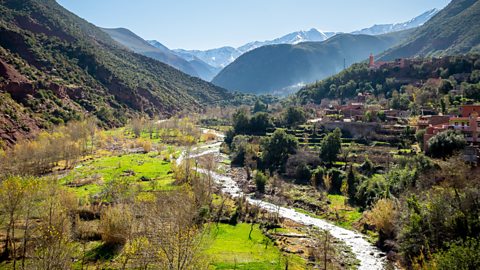
While Morocco's tourism industry has proven to be resilient in the face of disaster, with record tourism arrivals in 2023, hotels in largely unscathed Marrakech have reported a drop in bookings, while artisans behind the workshops damaged in Marrakech's old medina are still waiting for aid . All of the city's main attractions , including the El Badi and Bahai palaces, Secret Garden and the Saadian Tombs, have reopened since the earthquake, and while some areas of the old medina remain closed, its spice-scented alleys are as atmospheric as ever.
Although it's still too early to revisit some parts of the snow-capped High Atlas Mountains as communities rebuild, Abercrombie & Kent is among a raft of tourism operators helping to support the region's recovery by returning to less-affected areas such as the Ourika Valley, a popular trekking destination. Intrepid Travel has launched four new trips to Morocco for 2024, including a venture through the Happy Valley, also known as the Ait Bougmez region of the High Atlas Mountains.
3. Saba, Dutch Caribbean
The smallest special municipality of the Netherlands, the tiny tropical island of Saba is emerging as a champion of sustainable tourism in the Caribbean . Balancing the carbon cost of flying to the 13-sq-km island (reached by ferry from neighbouring St Maarten) is an impressive array of initiatives, including a solar park producing 35-40% of the island's power needs, a comprehensive recycling system, a marine park encircling the island (with excellent diving) and a ban on single-use plastics (Saba has its own water bottling plant). Helping to reduce dependence on the island's precious resources is a hydroponics farm at Rendezvous restaurant in the town of Windwardside, which uses 80% less water than conventional farming methods.
In 2023, the Saba Bank – the largest submarine atoll in the Atlantic Ocean – was named by international marine conservation organisation Mission Blue as a Hope Spot , a designation identifying destinations scientifically identified as critical to the ocean's health. Saba is also home to the first marine lab in the Windward Islands of the Dutch Caribbean for applied research, while the longstanding Sea & Learn Foundation engages travellers and locals in environmental projects throughout the year, from identifying fluorescing scorpions on a night hike to measuring growth rates of endemic orchids.
The mountainous volcanic island is laced with lush hiking trails, while beautifully patterned Nassau groupers are among the abundance of reef fish commonly encountered by snorkellers and scuba divers. Birders are in for a treat, with the entire coastline identified by Birdlife International as an Important Birding Area .
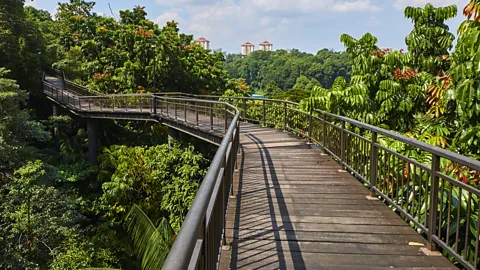
4. Singapore
Singapore's sustainability journey is legendary, kicking off in 1967 when then-Prime Minister Lee Kuan Yew mooted his "city in a garden" vision. Following more than 50 years of mindful urban development – including the creation of more than 300km of green corridors as part of the city-state's Park Connector Network – Singapore became the world's first entire nation to receive sustainable destination certification from the Global Sustainable Tourism Council, in 2023. The certification reflects the Southeast Asian nation's commitment to its Singapore Green Plan 2030 goals for sustainable development, which includes quadrupling solar energy deployment by 2025, reducing the waste sent to landfill by 20% by 2030, and limiting the registration of new cars to cleaner-energy models from 2030.
Locals and visitors continue to reap the benefits, with new and upcoming attractions including the 24km hiking-biking Rail Corridor (due to fully open in 2024) and the enhancement of 13 southern parks , along with two new trails on the Coast to Coast Trail network. Singapore is also set to welcome seven new MRT (metro) stations on the Thomson-East Coast Line in early 2024.
Opened in 2023 with cutting-edge initiatives (including a biodigester that transforms food waste into cleaning water), the Green Mark Platinum -certified Pan Pacific Orchard joins the Parkroyal Collection Pickering , a "hotel in a garden", as an innovative low-impact accommodation option for visitors.
5. Belfast, UK
The UK's tourism industry remains the strongest supporter of the Glasgow Declaration on Climate Action in Tourism launched at COP25 in 2021, with 172 signatories compared to the US in second place with 73. Among the UK cities making the biggest strides towards a sustainable future is Belfast, which in 2023 jumped from 47th place in the Global Destination Sustainability Index into the top 11 within 18 months. The Northern Ireland capital is now being held up as a blueprint for excellence in a white paper published by Edinburgh-based sustainability certification organisation Green Tourism .
Since the 2021 launch of its Belfast Resilience Goal targeting an inclusive, zero-emissions, climate-resilient economy within a generation, the city has seen more than 90 hotels, attractions and restaurants committed to sustainable tourism through Visit Belfast's internationally recognised Green Tourism program (up from five in 2021), with 75% of Belfast hotel rooms now holding a sustainability certification (up from 25% in 2021).
Popular Green Tourism-certified attractions include the Titanic Belfast museum, which aims to be a zero-waste organisation by 2030, and the neighbouring Titanic Hotel Belfast , created in the former headquarters of Harland and Wolff, builders of the RMS Titanic. With more than 50 docking stations, Belfast Bikes offers an easy, green local transport option.
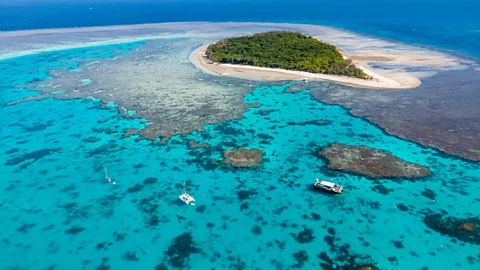
6. Southern Great Barrier Reef, Australia
Approximately 90% of the two million annual visitors to the Great Barrier Reef stick to the sultry northern hubs of Cairns and Townsville. Yet, some of the most rewarding and low-impact opportunities to experience this 2,300-km-long ecosystem occur in the Southern Great Barrier Reef .
Rehabilitated from a guano-mined coral cay left to feral goats, the manta ray haven of Lady Elliot Island at the reef's southern tip is now one of Australia's foremost eco-resorts, run almost entirely on renewable energy. Just 40km to north-east as the crow flies, uninhabited Lady Musgrave Island provides a wild backdrop for day trips and overnight glamping experiences with Lady Musgrave Experience , which holds Advance Ecotourism and Climate Action certifications from Ecotourism Australia . Tours operate from the region's key mainland port of Bundaberg , which received sustainable destination certification in 2023, also from Ecotourism Australia. Its state-of-the-art Mon Repos turtle education centre runs ranger-led turtle viewing tours during the nesting and hatching season (November to March), while recently launched Taribelang Bunda Tours offers opportunities to connect with ancient sustainability practices on Indigenous-guided experiences.
The relaxed agricultural region also offers a smorgasbord of farmgate and cellar door experiences including the Bundaberg Rum Visitor Experience , which in 2023 became the first tourism operator in Australia to achieve Ecotourism Australia's new Sustainable Tourism Certification .
7. Panama, Central America
Costa Rica has carved out a reputation as Central America's leader in sustainable tourism, and now neighbouring Panama – which in 2023 granted legal rights to turtles – is stepping into the limelight as a community-based tourism pioneer. Despite Panama's diverse array of Indigenous cultures (accounting for approximately 14% of the population) and rich biodiversity , the nation's tourism has traditionally centred on its famed canal and sultry capital Panama City.
Now, visitors can explore Panama's lush rainforests and palm-fringed islands more meaningfully with the people who know it best: Indigenous and rural communities. The recently launched SOSTUR digital portal lets visitors book local-guided adventures in regions largely untouched by tourism, from visiting the Naso (also known as Teribe) communities who have lived in the jungles of north-western Panama since before Spanish colonists arrived, to learning about the legends of the warriors and guardians of Dekö island from an Indigenous Ngöbe guide.

The portal is part of the Panamanian government's US$301m Sustainable Tourism Development Master Plan , which runs through 2025. It's main goal? To grow visitor numbers in a way that prioritises people and nature.
8. Maui, United States
The horror of the wildfires that ravaged the Hawaiian island of Maui in August 2023, claiming at least 115 lives, destroying more than 2,200 buildings and homes and uprooting thousands, was felt around the world. In the days following the tragedy, many Hawaiians told tourists to stay away . But with restaurants, hotels and tour operators since forced to lay off workers and unemployment rates surging, officials are now asking people to return responsibly .
Given the extensive devastation on the north-western side of the island, the Hawai'i Tourism Authority (HTA) reports that Lāhainā will remain closed to the public until further notice, and recommends checking accommodations in the nearby communities of Kā'anapali, Nāpili and Kapalua for availability before visiting. The island's wilder east side, meanwhile, remains ripe for exploration. Embark on the Road to Hana , a 103km road trip that takes in a sublime stretch of coastline fringed by wild beaches, picturesque waterfalls and lush trails; bring a torch for a self-guided tour of the Hana Lava Tubes near road Marker 31. Near Hana, explore the "alien" forest of Hosmer Grove in in Haleakalā National Park . Travellers can search for local businesses to support on the Maui Nui First website.
9. Greenland
Long overshadowed by the ground-breaking sustainable tourism initiatives of the lower Nordic nations, Greenland is increasingly also taking steps to safeguard its icy territory – and its growing tourism industry – as it navigates its future on the frontline of the climate crisis. Nuuk became the world's first capital city to be certified by EarthCheck as a sustainable tourist destination in 2020. In 2022, Visit Greenland announced the cessation of its support for conventional cruise tourism on sustainability grounds, and in 2023, Visit Greenland invited the tourism industry to support a shared pledge towards more sustainable and responsible tourism development.
As the nation prepares to welcome a new international airport in Nuuk in 2024, operators are urged to support the pledge's five themes, spanning the support of local products to creating unique opportunities for tourists to visit throughout the seasons.
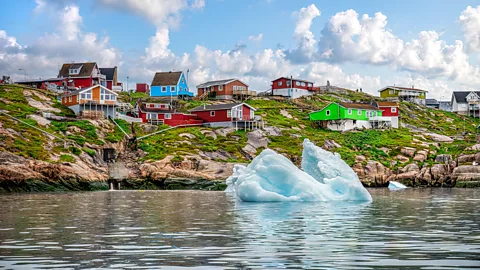
After banning future oil and gas exploration in 2021, Greenland is now focused on rolling out renewable energy, with government-run energy company Nukissiorfiit working towards producing 100% green energy by 2030. Expected to save 127 tonnes of CO2, the churches of Nuuk will be powered by green energy in 2024 .
Encouraging tourism beyond the capital is the excellent Icefjord Centre in Illulissat, due to welcome a new airport of its own in the coming years. Supporting sustainable local industries can also have a big impact in this island nation: try a musk ox burger, and look for the "Authentic Nunavut" sticker certifying Nunavut Inuit-made crafts.
10. Dominica, Lesser Antillies
In the wake of the category-five hurricane that devastated the small Caribbean island nation in 2017,
Dominica's prime minister announced plans to make Dominica "the world's first climate-resilient nation ". While the development of early-warning systems and resilient housing is now helping to safeguard residents, a new kayaking trail is helping to promote the island – already home to the Caribbean's longest hiking trail – as a sustainable tourism destination.
Hugging the island's dramatic west coast for more than 60km, the Waitukubuli Sea Trail is the Caribbean's first dedicated sea kayaking route. It runs south to north along the island's western coastline, taking in welcoming communities, secluded beaches, dramatic scenery and local cuisine. The trail is the brainchild of long-time Caribbean Peace Corps worker Wes Moses, who opened Soufriere Outdoor Centre on the island's south-west coast in 2022 after settling in Dominica in 2018. He's also joined forces with coastal lodgings to create a network of accommodations along the trail's 14 sections, with land-based hiking excursions and cultural experiences to enjoy along the way.
Not far from the trailhead at Scott's Head, Coulibri Ridge , the island's newest eco-resort, offers a luxurious base to kick-start your kayaking adventure.
Green Getaways is a BBC Travel series that helps travellers experience a greener, cleaner approach to getting out and seeing the world.
Join more than three million BBC Travel fans by liking us on Facebook , or follow us on Twitter and Instagram .
If you liked this story, sign up for The Essential List newsletter – a handpicked selection of features, videos and can't-miss news delivered to your inbox every Friday.
- Search Please fill out this field.
- Newsletters
- Inspiration
- Sustainability
Sustainable Tourism vs. Ecotourism: What's the Difference?
If you're starting to research more ways to become a more responsible traveler, you're bound to run across terms like "sustainable tourism,” "ecotourism," and "voluntourism,” sometimes even used interchangeably. But what do they all mean? In reality, ecotourism refers to the sector of low-impact tourism that includes natural areas, whereas sustainable tourism is a broader term describing sustainable practices within and performed by the tourism industry.
The environmental damages that can stem from irresponsible tourism have continued to come to light through complications from overtourism (when a destination or attraction suffers from overcrowding or an excess of tourists it isn’t designed to handle) and land degradation (when increased construction of tourism infrastructure negatively affects land resources and biodiversity). These terms are more than just travel industry buzzwords; sustainable travel is—hopefully—here to stay.
What Is Sustainable Tourism?
Sustainable tourism encompasses all forms of tourism that consider the long-term economic, social, and environmental impacts of tourism while addressing the needs of visitors, the environment, host communities, and the tourism industry itself. According to the Global Sustainable Tourism Council (GSTC)—an organization that sets global standards for sustainable travel and tourism—sustainable tourism doesn’t refer to a specific type of tourism but is rather an aspiration for the impacts of all forms of tourism.
Specifically, "sustainable tourism takes full account of its current and future economic, social and environmental impacts, addressing the needs of visitors, the industry, the environment, and host communities." This includes conservation efforts, preserving cultural heritage and traditional values, and providing equitably distributed socio-economic benefits.
Destinations and industries may practice sustainable tourism by prioritizing the natural environment when developing activities and infrastructure, respecting the cultural practices of host communities, and ensuring long-term economic operations to support the destination, to name a few.
Adopting a few sustainable practices into your travel routine isn’t just a win for the people, environments, and wildlife of your destination, it can often create more educational, meaningful, and authentic tourism experiences at the same time. Individual travelers can do things like buy locally made souvenirs, opt for public transportation instead of rental cars, buy an admission ticket to a protected conservation area (like a national park), or go low-impact camping to show their support for sustainable tourism.
What Is Ecotourism?
Sustainable tourism as a whole considers the economic, social, and environmental impacts of the travel industry, ecotourism tends to lean deeper into the environmental. The most cited definition of ecological tourism (or “ecotourism”) comes straight from the International Ecotourism Society (TIES), a nonprofit organization that’s been dedicated to promoting ecotourism since 1990. TIES defines ecotourism as “responsible travel to natural areas that conserves the environment, sustains the well-being of the local people, and involves interpretation and education.”
According to the United Nations World Tourism Organization (UNWTO), ecotourism refers to nature-based forms of tourism where the observation and appreciation of nature and traditional culture in natural areas is the main motivation behind traveling. Specifically, ecotourism has the following characteristics:
- Contains educational and interpretation features.
- Generally speaking, tours are organized by specialized, small-group tour operators.
- Destination partners are usually small, locally-owned businesses.
- Minimizes negative impacts on the natural and cultural environment.
- Supports the maintenance of areas used as ecotourism attractions.
This maintenance support is provided by the generation of income for communities, local organizations, and conservation management authorities as well as the availability of alternative employment opportunities and increased awareness of natural and culturally significant areas.
While ecotourism is just one of several different subsets of sustainable tourism, it tends to be the most widely recognized. Since it focuses primarily on experiencing and learning about nature, ecotourism should be managed in such a way that helps contribute to the conservation and preservation of those very areas. It goes farther than wildlife, and focuses on both environmental and cultural understanding of the natural places visited. For this reason, there are some communities and even entire habitats that completely rely on ecotourism as a means for survival.
For example, Palau in the South Pacific requires all visitors to sign an eco pledge before entering the country saying that they will act in a way that is both ecologically and culturally responsible for the sake of future generations of Palauans. Tourists can also look out for Palau Pledge Certified businesses to support companies that have made a commitment to sustainability. In Africa, many governments have safeguarded national parks and natural reserves that generate revenue for the local communities while keeping some of the world’s most iconic wildlife and ecosystems protected from extinction. In turn, nature-based tourism creates countless jobs and contributes funds to help manage these protected areas.
Other Types of Sustainable Tourism
Although ecotourism is a popular niche segment of sustainable tourism in natural areas, it's not the only one. Other forms of sustainable tourism highlight different priorities such as volunteer work, small businesses, and unique local experiences.
Voluntourism
Voluntourism involves tourists who travel for the specific purpose of volunteering, such as teaching English in a foreign country, working with a wildlife rescue center, or offering medical services to underdeveloped areas. Voluntourists can travel internationally or domestically, typically for a charity or non profit, participating in voluntourism programs that positively impact local communities and benefits destinations long-term.
Soft Tourism
Soft tourism (as opposed to hard tourism) is characterized by small-scale, locally owned and operated businesses that employ local community members, respect the local way of life and local traditions, and allow tourists to experience the truly unique aspects of a destination.
Hard tourism conversely focuses on large-scale mass tourism development, which often leads to negative impacts on the environment or keeps money out of the local economies. Soft tourism typically values experiences over checking off the most popular tourist attractions, taking a class over traveling without gaining any in-depth knowledge about the destination, and spending more time in one spot over hitting a new city every couple of days.
Community Tourism
Community-based tourism puts a region's tourism industry into the hands of its local residents, and it is often sponsored by its governments or non profits with expertise in tourism development. Community members will manage homestays where tourists can get an authentic experience of local culture, become tour guides, or provide other tourism services themselves rather than sourcing out to multinational or commercialized companies. This type of tourism is important because economic benefits usually go straight towards local families and stay within the community.
Global Sustainable Tourism Council. " GSTC Sustainable Tourism Glossary: Definitions of Important Terms ." 2021.
The International Ecotourism Society. " What Is Ecotourism ." 2019.
Related Articles
More related articles.
Long-term dynamics of grasslands and livestock in Norwegian cultural landscapes: implications for a sustainable transition of rural livelihoods
- Research article
- Open access
- Published: 02 September 2024
- Volume 39 , article number 171 , ( 2024 )
Cite this article
You have full access to this open access article

- Solomon Mulat Beyene 1 ,
- Vladimir Naumov 1 &
- Per Angelstam 1
Abandonment of cultural landscape practices has had a notable impact on grasslands and domestic livestock that depend on them. This affects the prerequisites for sustainable transitions of cultural landscapes, which combine traditional livelihoods and novel ones like tourism.
The aims of this study were to explore (1) the long-term temporal dynamics of grassland and livestock in a regional gradient from coastal to inland landscapes in Norway and (2) the temporal development of tourism types among regions.
Using three regions as case studies, with 62 municipalities, we analyzed (1) the temporal dynamics of grassland and livestock using agricultural census data from 1918 to 1999 and (2) two tourism types. Kruskal–Wallis and ANOVA were used to examine whether the relative changes in grassland areas and livestock units, respectively, differed significantly among regions. A PCA was conducted to explore relationships between grassland and livestock types. The proportions of tourist categories were compared.
The grassland area and thematic resolution of census data declined over time. Grassland areas correlated with domestic livestock units. Multivariate analysis explained 68% of the variation in grassland and livestock types among municipalities. There was a notable increase in the number of tourists, with summer tourism dominating where the cultural landscape was well conserved.
Conclusions
Our study underscores the importance of integrating regional historical trajectories for the conservation and use of valuable cultural landscapes, thereby providing sustainable transitions that combine traditional livelihoods and new types as tourism. Additional in-depth studies are needed to understand the detailed drivers of these changes.
Similar content being viewed by others
264 years of change and persistence in an agrarian landscape: a case study from the swiss lowlands.

Land cover transitions and effects of transhumance on available forage biomass of rangelands in Benin
Rural abandoned landscapes and bird assemblages: winners and losers in the rewilding of a marginal mountain area (nw spain).
Avoid common mistakes on your manuscript.
Introduction
Cultural landscapes are formed, through the long-term interaction between humans and the natural environment (Sauer 1925 ; Plieninger and Bieling 2012 ). They represent dynamic social-ecological systems that have co-evolved throughout history (Sarmiento-Mateos et al. 2019 ; Schmitz and Herrero-Jáuregui 2021 ). These interactions have led to modifications of natural landscapes in favour of multiple desired ecosystem services. In cultural landscapes, these go beyond material resources, and include non-material benefits tied to cultural values, aesthetics, recreation, and the overall well-being of communities (Tengberg et al. 2012 ; Plieninger et al. 2014 ). Modification and disappearance of cultural landscapes as social-ecological systems have led to the loss of characteristic diversity, coherence, and identity (Antrop 2005 ), such as in Europe.
Many European rural cultural landscapes have undergone substantial changes, especially since the mid-twentieth century (e.g., Tieskens et al. 2017 ). These changes are largely influenced by human activities aiming at intensified production of provisioning ecosystem services, and often cause losses of semi-natural habitats, biodiversity, cultural heritage, and beauty (e.g., Austad et al. 1991 ; Hamre et al. 2007 ; Tieskens et al. 2017 ). The issue of landscape has become an agenda for national and international policies in response to the potential effect of landscape change and the growing awareness of the need to protect and conserve landscapes’ cultural, aesthetic, and ecological values (Calvo-Iglesias et al. 2009 ). Grasslands are an important land use type within Europe’s cultural landscapes, covering over a third of the continent’s agricultural area (Lesschen et al. 2014 ). Approximately 25% of the fodder consumed by livestock in Europe comes from either permanent or cultivated grasslands (Chang et al. 2015 ), making these lands important forms of land use. In addition to forage for livestock, these provide habitat for a wide range of naturally occurring species that cannot cope with intensive forms of land use (Carlier et al. 2009 ; Huyghe et al. 2014 ). The decline of traditional land use systems, for example, the Scandinavian mixed farming system (MacDonald et al. 2000 ; Mjærum 2020 ), coupled with declining livestock grazing, highlights the broader challenges facing European rural cultural landscapes (Plieninger et al. 2006 ; Daugstad et al. 2014 ).
As a cultural landscape, the Scandinavian mixed farming system has a long history of integrated agriculture and animal husbandry, including cattle, horses, sheep, and goats (Berglund et al. 2014 ; Eriksson and Cousins 2014 ). The long-term use of animal husbandry based on livestock grazing, mowing for hay, collecting firewood, and regional pollarding and lopping has since 4000–3500 BP created a unique structural diverse cultural landscape with a wide range of habitats in Norway (Austad et al. 1991 ; Olsson et al. 2000 ). Due to intensified agricultural production, and abandonment of less productive farming units and activities, extensively managed traditional land use systems are affected negatively (MacDonald et al. 2000 ). Thus, traditional cultural landscapes are now deteriorating dramatically (Simensen et al. 2021 ), and once common, semi-natural grasslands are declining and threatened (Vandvik and Birks 2002 ). In parallel, livestock grazing in natural and semi-natural habitats has declined in recent decades (Austrheim et al. 2011 ), resulting in reduced utilization of meadows and pastures in woodlands, forests, and mountain areas, which have traditionally provided livestock feed in Norway (Hansen et al. 2019 ).
Norway’s cultural landscapes thus exhibit diverse characteristics shaped by their geography, history, and social structure (Jones and Daugstad 1997 ). Traditional cultural landscapes are distinguished by a spatial division into infields (innmark in Norwegian) and outfields (utmark in Norwegian) (Diinhoff 2005 ; Hansen et al. 2019 ). These terms have a long history in Norwegian landscape management and cultural traditions, where infield refers to the agricultural landscape near settlements and villages, including fenced and managed grassland used to produce winter feed. On the other hand, an outfield may include mountain regions, coastlines, forests, and unmanaged pastures within the forest used for grazing (Diinhoff 2005 ; Swensen and Jerpåsen 2008 ; Hansen et al. 2019 ). The outfield area covers 97% of Norway’s total area (Holm 2002 ). Traditionally, livestock would be seasonally located in village settlements in valleys with infields during winter and moved to mountain outfields during the summer to utilize natural pastures (Prøsch-Danielsen et al. 2020 ).
Animal husbandry is an integral component of cultural landscapes (Evans and Yarwood 1995 ) and plays a role in shaping them through grazing and transforming the landscape’s structure (Wehn 2009 ). There are interactions between livestock and wildlife when they coexist in cultural landscapes and share resources in space and time. For example, large carnivores, such as wolves and bears, while integral to the ecosystem, are incompatible with livestock in Norway, resulting in conflicts (Olsson and Rønningen 1999 ; Ghosal et al. 2015 ). Livestock and wildlife play integral roles in shaping cultural landscapes; thus, addressing their interaction would offer a more comprehensive understanding of cultural landscapes.
While several studies have been published on landscape change in general (Bryn and Debella-Gilo 2011 ; Olsson et al. 2000 ) and the change in semi-natural grasslands (Aune et al. 2018 ) in particular, most of them are limited to specific single locations, short investigation periods or focused only on mountain areas. However, the extent and rate of changes differ depending on the time period being examined and regional geographical contexts (Schneeberger et al. 2007 ; Antrop 2004 ). Previous studies have also highlighted the necessity for multiple place-based studies of land use changes (Lunetta et al. 2006 ; Wu et al. 2011 ; Angelstam et al. 2022 ) representing different stages of transition of grassland dynamics. We thus highlight the necessity of considering long-term trajectories of change in multiple cultural landscapes as case studies along regional gradients (e.g., from coastal to inland regions).
The biophysical features among different regions of Norway are diverse and have different potential for land-use practices and resource exploitation. This variation allows for replicated landscape studies of the long-term dynamics. Comparative studies of multiple landscapes as social-ecological systems can be viewed as natural experiments (Diamond 1983 ). Therefore, one can employ a “time machine” approach (Angelstam 2001 ) to compare landscapes with different trajectories of change along gradients in environmental history. This approach enables an understanding of the dynamics of cultural landscapes’ composition and structure. In this study, we focus on the long-term regionally specific transitions of grasslands and livestock, which have traditionally supported local livelihoods for centuries, and the emergence of new rural livelihoods based on tourism in cultural landscapes.
Rural landscapes, which traditionally formed the base for livelihoods, are now increasingly subject to other demands, such as shifting from traditional food production to more diverse use of immaterial resources (Daugstad 2008 ). In this study, rural landscapes are areas characterized by natural and semi-natural habitats and land use types associated with agriculture and forestry. The agricultural sector of Norway thus sees tourism as a necessary strategy for diversification and maintenance of cultural landscapes, and it provides an option to conserve traditional farming and sustain its aesthetic value (Daugstad et al. 2006 ; Van der Sluis et al. 2019 ). The beauty, cultural value, and biodiversity of cultural landscapes, shaped by various agricultural activities, are viewed as an asset for the tourism sector (Daugstad 2008 ). However, with the decline of small-scale diversified agricultural activities, heterogeneous cultural landscapes become homogenous production landscapes. This highlights the need for sustainable transitions, which maintain diverse cultural landscapes by considering commonly neglected socio-economic factors such as improving the profitability of cultural landscape management and encouraging increased societal demand for locally produced food and tourism (Waldén and Lindborg 2018 ).
This study adopts a longitudinal case study approach in a regional coastal to inland gradient to address the paucity of integrated studies of grassland and livestock dynamics maintaining diverse cultural landscapes as assets for tourism supporting sustainable rural transitions. First, we analyze the temporal dynamics of different grassland types and the domestic livestock that feed on them in three contrasting regions of Norway from 1918 to 1999, using agricultural census data from municipalities within these regions. Second, we explore the prediction that the proportion of two different types of tourism in the three study regions matches the level of maintenance of cultural landscapes.
Methodology
Case study as a framework.
To examine the long-term development of the cultural landscape, we employed a case study approach involving 62 municipalities as landscape replicates in three regions in a coastal-inland gradient of landscape development. This methodology allows us to explore phenomena within specific time, context, and space, as emphasized by Bartlett and Vavrus ( 2017 ). We selected this approach as the framework to explore the dynamics of grassland, livestock, and tourists within regionally nested local municipalities. Utilizing multiple landscapes as case studies is a tool for synthesizing and comprehending information across varying temporal and spatial dimensions (Bartlett and Vavrus 2017 ). This strategy of comparing multiple case studies consisting of large spaces and places helps us to understand and learn about landscapes (e.g., Angelstam et al. 2013 ). By employing this methodology, we aim to gain comprehensive insights into the long-term transformation of cultural landscapes.
Norway has a complex topography with mountains, valleys, and a rugged coastline with many fjords (Simensen et al. 2021 ). This study focuses on three case study regions representing the characteristic gradient of Norwegian landscapes, viz. coastal Sogn og Fjordane via intermediate Oppland to inland Hedmark (Fig. 1 ).

The location of the study area encompasses three regions—coastal Sogn og Fjordane and inland Oppland and Hedmark—with data collected from a total of 62 municipalities nested within these regions
The coastal Sogn og Fjordane region (18,623 km 2 ) is located in western Norway and is characterized by a dramatic natural landscape with narrow fjords and valleys nestled between steep mountains, and with altitudes ranging from sea level to > 2000 m above sea level. Agricultural land is distributed along the seashores and in the lower parts of the valleys. It consists of pastures and meadows for grass production, and livestock mainly involves cattle, sheep and goats (Clemetsen and Van Laar 2000 ). The region's forest cover is characterized by deciduous forests dominated by birch ( Betula sp. ) and alder ( Alnus incana ), along with pine forests ( Pinus sylvestris ) and introduced Sitka Spruces ( Picea sitchensis ) (Nygaard and Øyen 2017 ).
The Oppland region (25,192 km 2 ) is located in central southern Norway, bordering Sogn og Fjordane in the west and Hedmark in the east. The southern part of the region is flat, with farms that focus on growing crops, cattle, and sheep. Oppland has some of the country’s largest agricultural and productive forest areas (Falk-Andersson et al. 2016 ). The northern part is mountainous and characterized by century-long traditions in mountain pasturing.
The inland Hedmark case study region (27,400 km 2 ) is situated in eastern Norway along the border with Sweden, with altitudes ranging from 119 to 2170 m above sea level. The region has favourable conditions for agriculture in valleys, forestry for wood production in uplands, and animal husbandry during summer above the tree line. In this region, forests are managed mainly for timber production and consist predominantly of Scots pine ( Pinus sylvestris ), Norway spruce ( Picea abies ), and birch ( Betula spp .) species.
Data sources
Agricultural census.
We used the official Norwegian agricultural census data, which documents all aspects of farming practice in the study area. However, this dataset has variations in the terminology used to document grassland types over time. Additionally, the data collection methods have changed periodically, further complicating the process of standardization and interpretation. For this study, grassland types were, therefore, grouped based on their function: mowed or grazed, and types in terms of being cultivated or natural (Table 1 ). Additionally, we collected information on four livestock species, including the number of cattle, horses, sheep, and goats at the municipality level. The spatial unit for analyses was the municipality, which we view as a local landscape or social-ecological system (Ostrom 2009 ) and the lowest administrative level for which data was available. It is also the smallest administrative unit for which data are available from the agricultural census in Norway. Data were collected from 62 municipalities across the three case study regions. We combined data for the municipalities that were merged during the study period and excluded those that were divided at any time throughout the study period. The historical agricultural census data was obtained from the digital database of Statistics Norway (Statistics Norway 2023a ). The census has been recorded at 10-year intervals since 1907, when the collection of agricultural censuses began. The data provides information on the areas of different grassland types and the numbers of livestock types summarised at the municipal level. We excluded the 1907 data due to its poor quality and incompleteness. The agricultural census of Norway was discontinued in 1999. We thus examined the long-term dynamics in grassland and livestock in the three case study regions from 1918–1999. Different terms were used in different years of the agricultural census to document the same types of grasslands (see Table 1 ). Thus, we carefully examined the qualitative descriptions provided in the census to categorize the grassland types properly.
Tourist statistics
We collected data about the number of visiting tourists in summer, autumn, and winter, in each case study region for the period 1963 to 1996. Since the data was unavailable at the municipality level, it was instead collected at the regional level, obtained from hotel statistics (Statistics Norway 2023b ). The hotel statistics provided data in three categories: tourist and mountain hotels, approved rural hotels, and approved urban hotels. We collected the data from the tourist and mountain hotel category to capture the number of tourists in the area, as the other categories are defined as being occupied by businessmen and occasional guests. However, for Hedmark, there was no data on the tourist and mountain hotel category from 1963 to 1971. Day tourists were not included in the analysis, and the autumn data were merged with the summer data.
Data analysis
We calculated the total grassland area in each municipality as the sum of the area of the different grassland types. Subsequently, we calculated the proportion of grassland area coverage at the municipal level as a percentage of grassland area relative to the municipality’s surface land area. This proportion was calculated to account for variations in the size of municipalities. To examine if the relative changes in grassland areas among regions were significantly different, a Kruskal–Wallis non-parametric test was applied. We used the non-parametric test since the assumption for the parametric test was not met. Given our interest in the change in grassland areas from 1918 to 1999, we used the rate of change in grassland areas as a response variable. In addition, we performed correlation and regression analyses to investigate the relationship between grassland areas and livestock units.
The livestock numbers were converted into livestock units by multiplying the number of animals for cattle, horses, sheep, and goats with the conversion rates provided by (FAO 2011 ) (0.9, 0.65, 0.01, and 0.01, respectively). We used ANOVA to examine whether relative livestock unit changes varied among regions using livestock unit as the response variable. To determine the region that exhibited significant differences we used a post hoc Tukey’s test (Pereira et al. 2015 ). Furthermore, we performed multivariate data analysis to explore the relationship between different grassland and livestock types and their quantities at the municipality level. To do this, a principal component analysis (PCA) was performed using R software for eight variables, comprising four grassland types (Table 1 ) and four livestock types in 62 municipalities during nine time periods spanning from 1918 to 1999. The Kaiser–Meyer–Olkin (KMO) measure of sampling accuracy was performed to determine whether the data is suitable for running PCA (Shrestha 2021 ). The overall measure of sampling adequacy was 0.69, exceeding the threshold of 0.5, indicating that the data is suitable for factor analysis (Shrestha 2021 ).
We also explored the trends in tourist numbers from 1963 to 1996 in the study regions. The total number of reported tourists was divided into two categories: summer (i.e., summer and autumn merged) and winter. We assume that the proportions of these two groups mirror tourists focusing on cultural landscapes versus skiing, respectively. We used simple linear regression to examine the trends of tourist changes over the year in all the regions.
Grassland dynamics
For the entire period 1918 to 1999, we observed a 20%, 22%, and 66% decrease in grassland areas in the coastal Sogn og Fjordane, intermediate Oppland, and inland Hedmark, respectively. The rate of grassland area changes varied significantly among the regions. The relative decline in grassland area in Hedmark was significantly (P < 0.001) steeper compared with the other two regions (Fig. 2 ), and there was no significant difference in the relative change of grassland between Oppland and Sogn og Fjordane.

The temporal development of the land area proportion of grassland in the Norwegian coastal region of Sogn og Fjordane, intermediate Oppland, and inland Hedmark
Over time, the diversity of terms used in traditional farming practices varied. As a result, the diversity of terms used to describe the different types of grasslands in the Norwegian agricultural census increased from 6–8 until 1949 and then decreased to 4 consistent terms afterward (Fig. 3 ). This reduction of terms provides insight into changes in land use, indicating a decrease in the amount of land being used for grazing animals and haymaking in cultural landscapes.

Changes in the number of grassland terms used in the Norwegian Agricultural Census from 1918 to 1999
The temporal development of the various grassland types in all three regions is presented in (Fig. 4 ). The area of cultivated grassland for grazing (Graz_Cult) generally increased from 1918 to 1999 across all three regions. In contrast, the area of the natural grassland used for grazing (Graz_Nat) and mowing (Mow_Nat) experienced a decline from 1918 to 1999. There were, however, regional differences. While in Sogn og Fjordane and Oppland, the declines of Graz_Nat were 38% and 79%, respectively, in Hedmark, the area decreased by 90%. The area of Mow_Nat decreased by 91% in Sogn og Fjordane, 96% in Oppland, and 98% in Hedmark. The area of cultivated grassland for mowing (Mow_Cult) consistently increased in the coastal Sogn og Fjordane and intermediate Oppland but declined in Hedmark. In contrast, the area of Mow_Nat showed a steady downward trend during the whole study period in all three regions. Summarising, the decline of the land area covered by grassland was more pronounced in Hedmark, particularly between 1949 and 1979. On the other hand, unlike Hedmark, the overall grassland area coverage in Sogn og Fjordane and Oppland remained relatively stable.

Temporal development of different grassland type areas from 1918 to 1999 in the three regions: Graz_Cult: Cultivated grassland for grazing, Graz_Nat: Natural grassland for grazing, Mow_Nat: Natural grassland for mowing, Mow_Cult: Cultivated grassland for mowing
Livestock dynamics
The summed livestock units for cattle, horses, sheep, and goats differed among the three regions examined through the temporal analysis from 1918 to 1999. Notably, there was a consistent trend across all regions, with livestock units increasing during the 1930s followed by a decline in the 1940s (Fig. 5 ). In coastal Sogn og Fjordane, livestock units decreased from 94.5 × 10 3 units in 1918 to 77.1 × 10 3 in 1999, an 18% decline. Intermediate Oppland experienced a slight increase in total livestock, increasing by 1% from 112 × 10 3 livestock units in 1918 to 113.2 × 10 3 livestock units in 1999. In Hedmark, the livestock unit number declined from 92.07 × 10 3 livestock units in 1918 to 43.6 × 10 3 livestock units in 1999, representing a 53% decrease. The relative livestock unit changes significantly varied among the regions (P < 0.05), with a distinct difference observed between Sogn og Fjordane, Oppland, and Hedmark.

( Source Norwegian Agricultural Census)
Temporal variation of livestock units across the three study regions from 1918 to 1999
Additionally, the population structure for large vs. small livestock species (cattle and horses vs. sheep and goats), and cattle vs. horses, sheep vs. goats, respectively, differed among the three regions (Fig. 6 ). The dynamics of livestock composition demonstrated distinct trends across the three regions over time. In the coastal Sogn og Fjordane, small animals comprised a large proportion of the population, accounting for 71% in 1918 and maintained their dominance by increasing to 81% by 1999 (Fig. 6 ). In the intermediate Oppland, the proportion of large animals dropped from 58 to 31% during the study period. In Hedmark, the proportion of large livestock species decreased from 62% in 1918 to 37% in 1999. In the past, these regions were dominated by large animals, particularly cattle. However, the proportion of goats among the small animals declined in all three regions. The proportion of horses among the large animals also showed a consistent decrease across all three regions. Small livestock species, particularly sheep, had the highest share in Sogn og Fjordane and has become dominant in Hedmark and Oppland regions.

Dynamics in the composition of livestock: Large animals (cattle and horses) and small animals (sheep and goats) are calculated as a proportion of the total livestock. Cattle are calculated as a proportion of large animals, and sheep as a proportion of small animals
Grassland and Livestock
A linear regression model revealed a strong association between grassland and livestock units across all three regions with R 2 values of 0.90, 0.66, and 0.91 in Sogn og Fjordane, Oppland, and Hedmark (p < 0.001), respectively (Fig. 7 ). The result of the PCA analysis covering 62 municipalities in the three regions (Fig. 8 ) showed that principal component 1 (PCA1) and principal component 2 (PCA2) together accounted for a total of 68% of the variance in the data. This suggests that the presence and characteristics of different grassland types are associated with the presence of different species of livestock. The score of 45% for PCA1 was most positively related to grassland (Graz_Cult, Graz_Nat, Mow_Cult) and the livestock types (Horse, Cattle), and the score of 23% for PCA2 was most positively related to Mow_Nat and goats (Table 2 ).
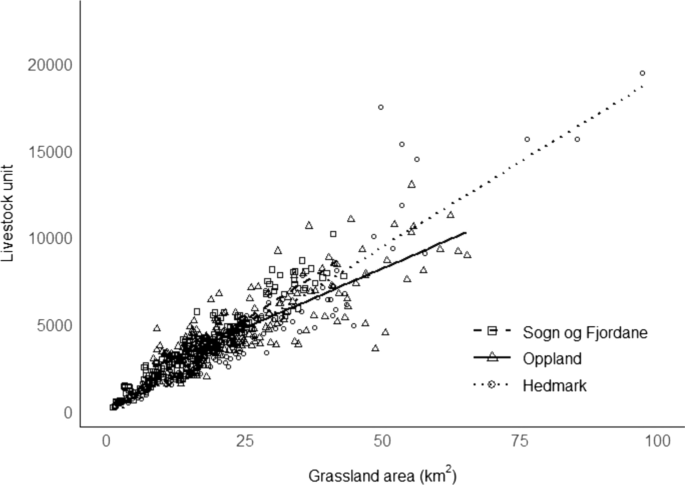
Relationship between total grassland area and livestock units based on municipality-level data from 1918 to 1999

Principal components of the dataset based on grassland types and livestock from 1918–1999 among 62 municipalities (i.e., 62 × 9 = 558) in the coastal Sogn og Fjordane and the intermediate Oppland and inland Hedmark. Each point represents a municipality in a region with a different shape that corresponds to the eight variables in each region from the year 1918 to 1999
In all three regions, the number of tourists increased significantly from 1972 to 1996: Sogn og Fjordane R 2 = 0.98, Oppland R 2 = 0.91, and Hedmark R 2 = 0.77. Focusing on sustaining the Norwegian cultural landscapes with grasslands and livestock to maintain an attractive green infrastructure for tourism, summer tourism should be more relevant than winter tourism. In Sogn og Fjordane, there was a high proportion of summer and autumn tourists, accounting for 100% in 1963 and remaining high at 75% in 1996 (Fig. 9 ). In the intermediate Oppland, the proportion of summer tourists ranged from 73% in 1963 to 58% in 1996. In the inland Hedmark region, the proportion remained constant at 50–55% from 1972 to 1996 (Fig. 9 ). Thus, Oppland and Hedmark stand out as more of winter destinations compared to Sogn og Fjordane.

Temporal changes in the proportion of merged summer and autumn tourists out of all tourists in the three study regions (1963–1996) for Sogn og Fjordane and Oppland and (1972–1996) for Hedmark
Patterns in grassland and livestock dynamics
Grasslands, including meadows and pastures, have been managed in Norway for centuries to support domestic livestock husbandry as a foundation for smallholder livelihoods (Olsson and Rønningen 1999 ; Wehn et al. 2018 ). We used the available Norwegian agricultural census data to examine the long-term temporal changes in different grassland types used for summer and winter feed from 1918 to 1999 in three regions representing Norway's characteristic coastal to inland gradient.
The large variation in grassland types reflects the diverse historical utilization of the cultural landscape and the broad knowledge that the farmers had of the ecology of different types of grasslands (Bele et al. 2023 ). Local terms used for different types of grassland demonstrate this understanding. However, over time, there has been a decline in the number of terms used to describe the different types of grasslands in the Norwegian agricultural census. Similar temporal changes in terms used to describe grassland types were observed in Swedish agricultural statistics (Manton and Angelstam 2018 ). Some types of grassland were eventually excluded from the agricultural census because the amount of grassland had decreased to a degree where it was no longer deemed worth including them in the census.
The different grassland categories exhibited various patterns over time in the three regions. For instance, the area of Mow_Nat has consistently declined in all three regions. This category encompassed the grassland areas in the outfield used for haymaking and covered a large area at the beginning of the study period, particularly in Sogn og Fjordane and Oppland, which shows the extensive utilization of outfield fodder resources in the studied regions. Historically, fodder resources located in locally remote forests and mountains were utilized through summer farms associated with transhumance activities, which have declined considerably in the twentieth century (Daugstad et al. 2014 ; Bele et al. 2023 ). Previously used for livestock, these areas have experienced a natural succession process, gradually transforming open or semi-open habitats into forested habitats dominated by mountain birch and pine trees (Olsson et al. 2011 ). Because of the use of artificial fertilizers, grassland production gradually became concentrated on arable lands, and the utilization of outfield hay meadows declined and became endangered habitat (Norderhaug and Johansen 2011 ). In contrast, the area of the Mow_Cult category that included cultivated hay meadows increased in Sogn og Fjordane and Oppland but decreased in Hedmark. The increase in the area of cultivated hay meadows could be due to the decline in the utilization of outfield fodder resources, which belong to the category of Mow_Nat in our study. However, the trend was the opposite in Hedmark, where the area of Mow_Cult has strongly declined, which could be attributed to the policy that is linked to economic incentives aimed at increasing crop production since the region is well-suited for agricultural practices (Lieblein et al. 2001 ). The proportion of land area allocated for grassland has diminished in this region. The area of Graz_Nat, which covers the natural grassland areas used for grazing in the infield areas, exhibited the same pattern of declining trend in all the regions with varying rates of change.
From 1960 to 2015 approximately half of Norway’s semi-natural grasslands were lost (Aune et al. 2018 ). Forest has encroached upon semi-natural habitats in both valleys and subalpine areas (Olsson et al. 2000 ; Eiter and Potthoff 2007 ; Gellrich et al. 2008 ). Reduced grazing and abandonment of high-altitude natural resource use have expanded the forest limit to higher altitudes (Bryn 2008 ). This has changed the Norwegian cultural landscapes through loss and fragmentation of semi-natural habitats (Olsson et al. 2000 ; Penniston and Lundberg 2014 ), loss of cultural heritage (Swensen and Jerpåsen 2008 ), and thus limited the portfolios of rural income sources (Lindhjem et al. 2015 ).
Grassland areas are decreasing also in other European countries along with the transformation of rural cultural landscapes. For example, semi-natural grassland areas in Sweden decreased by 90% since the late eighteenth century (Hansson and Fogelfors 2000 ). Luoto et al. ( 2003 ) also reported a drastic loss of semi-natural grasslands in Finland. In England, 47% of semi-grasslands were lost between 1960 and 2013 (Ridding et al. 2015 ), and a similar trend was observed in Denmark, where 9% of the semi-natural grasslands were converted into shrubs from 1965 to 2010 (Hellesen and Levin 2014 ). Studies have shown that transhumance activities have been abandoned, resulting in the loss of pastures, especially in mountain areas (MacDonald et al. 2000 ; Daugstad et al. 2014 ). Regionally, the loss of grassland habitat networks over the past 200 years has reduced the amount of functional habitat networks by up to two orders of magnitude for species depending on grasslands (Manton and Angelstam 2018 ). Traditional livestock grazing systems are also essential for maintaining cultural landscapes and their rural heritage and cultural identity as key assets sustaining multi-functional landscapes (Troiano et al. 2021 ).
A decline in grassland in Europe has been observed, with a significant decrease in the number of grazing cattle and sheep (Varga et al. 2016 ). Animal husbandry has a long history and plays an essential role in Norwegian agriculture (Austrheim et al. 2011 ). Before the 1950s, sheep, goats, and cattle were the most common grazing animals in mountain areas during the summer (Myhre 2004 ). Subsequently, outfield grazing has declined over time due to the loss of cultural land management practices. Natural succession has resulted in further diminishing of areas for mowing and grazing (Vandvik and Birks 2002 ).
We explored the temporal dynamics of livestock units of domestic livestock dependent on grasslands as a primary source of feed in the cultural landscape. The results for the period 1918–1999 indicated a slight decline in the coastal Sogn og Fjordane region, long-term fluctuations in intermediate Oppland, but a strong decline in livestock units in the inland Hedmark region. This declining trend in Hedmark was also observed in the study by Lieblein et al. ( 2001 ), which covered the period from 1929 to 1999. The region is best for crop production since the area is well suited for agriculture. Additionally, besides the livestock population, the composition also changed over the study period. In Sogn og Fjordane, the livestock composition continued to be dominated by small livestock species, mainly sheep. In contrast, in the intermediate Oppland and inland Hedmark, there was a notable shift from being dominated by larger animals, particularly cattle, to smaller livestock species, mainly sheep. Sheep were the predominant livestock kept in most of the grassland areas, especially from the 1970s onwards, in the mountainous regions of western Norway and the upland valleys of eastern Norway (Almås 2004 ). The result of our study aligns with the findings of Thorvaldsen et al. ( 2013 ), who identified a shift of mixed livestock with cattle and sheep towards sheep only. The number of goats has been steadily decreasing during the last 80 years, particularly in Hedmark. In 1939, there was a notable growth in the livestock population in all three regions due to the change in the country’s agricultural policy, which stimulated animal production during World War II as imports from abroad became less available and more expensive (Hegrenes and Asheim 2020 ).
The livestock sector is dynamic and constantly changing, and the number of livestock is decreasing in most European countries (Neumann et al. 2011 ). For instance, there has been a decreasing trend in the number of livestock like cattle and sheep in East-central Europe between the years 1940 and 2014 (Babai et al. 2016 ). Similarly, a decline of 41% in domestic livestock, mainly sheep, goats, and cattle, has been observed in northern Greece between 1961 and 2011(Chouvardas et al. 2022 ). Several factors are reported in the literature, including increasing public interest in environmental issues, changes in consumer awareness, animal disease, and agricultural policy, which are considered major driving forces that influence the viability of keeping livestock in cultural landscapes (Hermansen 2003 ; Neumann et al. 2011 ). The changes in livestock units were correlated with changes in grassland areas across all regions. This can be explained by the direct linkages between livestock units and the amount of grassland. Even though the rate of change varied among regions, the overall dynamics of grassland and livestock showed a distinct pattern of decline, especially between World War II and the 1970s, which coincides with the period when the cultural landscape of Norway dramatically changed (Almås 2004 ). However, it is essential to note that while this study’s result showed a direct relationship between grassland area and livestock, other studies contrast perspectives, such as a decline in the grassland concurrent with an increase in the number of livestock (Kemp and Michalk 2007 ).
Cultural landscape and tourists
Historically, rural landscapes in Norway have been used for livestock farming, with sheep, goat, and cattle grazing in semi-natural grassland with valued biodiversity and cultural heritage, thus shaping the visually attractive characteristics of the landscape (Austad et al. 1991 ; Asheim et al. 2020 ). This cultural landscape has experienced considerable change since the middle of the twentieth century due to active reforestation and no management of encroaching vegetation as mowing and grazing practices have almost come to an end in these areas (Bryn and Debella-Gilo 2011 ; Vinge and Flø 2015 ).
The marvellous natural scenery of the cultural landscapes in Norway has played an important role in promoting Norway as a tourist destination and is highly appreciated by visiting tourists as well as locals (Strumse 1994 , 1996 ; Prestholdt and Nordbø 2015 ). Thus, the existing cultural landscapes and their maintenance do play a role in contributing to the tourism industry (Daugstad 2008 ; Vik et al. 2010 ). Seasonal tourism activities have been crucial for over a century in generating income and employment opportunities for people residing in rural areas of Norway (Flognfeldt 2001 ). In this study, we explored the temporal change in the total number of tourists in the three studied regions since the rise of mass tourism in the 1960s (Puijk 2000 ), which covered half of our study period. The number of tourists has consistently increased since 1963, particularly in Sogn og Fjordane and Oppland. Using the proportion of summer tourists as an indicator of cultural landscape use, Sogn og Fjordane stands out. This indicates the ability of this region to attract tourists. In contrast, the proportion of summer tourists is much lower in the intermediate Oppland and inland Hedmark. This indicates that these regions are desirable destinations for winter tourists, for example, the ski resorts Gausdal, Hafjell and Kvitfjell in Oppland, and Trysil in Hedmark (Andersen et al. 2018 ; Stensland et al. 2021 ).
The presence of grasslands in a diversified rural landscape provides added value for tourists, as these areas offer greater aesthetic and recreational potential than uniform areas, such as focusing on crop production in forestry and agriculture (Parente and Bovolenta 2012 ). In addition, the reduction of agricultural practice has led to the return of forests by natural succession or reforestation of mountain pastures, reducing the appeal of mountain landscapes for recreation and tourism (Olsson et al. 2011 ). The relatively lower number of tourists focusing on cultural landscapes in Hedmark may be attributed to the prevailing attitude, especially among foreign tourists to Norway, who tend not to appreciate landscapes reclaimed by forests (Bryn et al. 2013 ). Additionally, people in Norway tend to dislike landscapes with elements of modern agricultural practices and highly prefer traditional cultural landscapes (Kaltenborn and Bjerke 2002 ). The aesthetic value of the landscape diminishes as the previously diverse and open landscape becomes uniform and darker due to forest reforestation (Olsson and Rønningen 1999 ). Conversely, the tourism sector may have impacts on landscapes. The adverse impact of tourism on local wildlife populations may include local disturbances (Madsen et al. 2009 ) due to the development of infrastructures like roads and trails and the establishment of holiday cabin areas fragments habitats (Nellemann et al. 2003 ). For instance, tourism associated with protected national parks is a contentious issue due to conflicting interests and barriers that arise from a lack of communication and mutual understanding and a fear of losing hegemony and control (Higham and Inge Vistad 2011 ). If unaddressed, such aspects could undermine sustainable transitions of cultural landscapes.
Implications for sustainable transitions of livelihoods
European rural landscapes today are undergoing a rapid transition (Antrop 2005 ; Primdahl et al. 2019 ) the most prominent of which is an increase in forested areas and a decrease in arable land and pastures (Van der Sluis et al. 2019 ). In the Nordic countries, the maintenance of grasslands and livestock in rural areas currently represents a minor and decreasing contribution to the local economies, which instead are largely dependent on urban visitors for recreation and tourism. Put simply, there is a transition from producing a tangible product like food to producing recreation opportunities. This study indicates that large areas of grasslands have been converted to other land uses and are subject to intensification, particularly from the 1950s. This period coincides with the time when areas that were once used for farming and livestock were abandoned, and as a result, extensive spontaneous natural succession or deliberate reforestation has occurred and transformed rural cultural landscapes (e.g., Fjellstad and Dramstad 1999 ; Moen et al. 2006 ; Bryn and Debella-Gilo 2011 . This decline can be attributed to the introduction of modern technologies and machinery in Norwegian agriculture for increased crop production, resulting in the abandonment of outfield resource utilization (Haugen 1990 ; Daugstad et al. 2006 ). Mowing and grazing have thus almost come to an end in some areas. The national tourism industry is thus concerned because well-managed traditional cultural landscapes are central to Norway’s touristic appeal (Vinge and Flø 2015 ; see also Fig. 10 ).

Horses used for recreational purposes in a cultural landscape with grazed managed grassland in the inland Hedmark region, and goats used for cheese and meat production in natural mountain pastures in the coastal Sogn og Fjordane region (photos by Per Angelstam and Stine Skjerdal)
The three Norwegian case study regions in this study show that in contrast to the inland Hedmark region, in which the grassland area declined considerably, in coastal Sogn og Fjordane and inland Oppland, the amount of grassland was relatively stable. This suggests that the grassland area in this coastal region and the mountain inland region of Oppland have been well maintained over time, thus contributing to the maintenance of a diverse cultural landscape. The historical significance of livestock raising in the Sogn og Fjordane region, including small livestock such as sheep and goats, was noted by Clemetsen and Van Laar ( 2000 ). The concept of ‘habitat variegation’ captures landscapes with diverse vegetation in different stages of modification (McIntyre 1994 ), stressing that ‘integration of conservation and agricultural production interests are pivotal to the management of a variegated landscape’.
A living cultural landscape with different grassland and livestock types can thus form the base for new value chains supporting sustainable transitions of livelihoods. Tourism based on experiencing cultural landscapes and manufacturing of exclusive food are good examples. The coastal Sogn og Fjordane region has a legacy of tourism based on its natural and cultural heritage, and the Nærøyfjorden World Heritage Site established in 2008 is a prime example (Stokke et al. 2016 ; Clemetsen and Stokke 2018 ), and a total of ca. 700 thousand tourists visit this cultural fjord landscape yearly. This potentially creates high pressure on natural resources and local communities. Nevertheless, if undertaken responsibly, tourism may be a driver for maintaining cultural landscapes and a vehicle for sustainable rural transitions. Quantifying the multi-functionality of the fjord and mountain agriculture, Bernués et al. ( 2015 ) estimated the perceived considerable welfare loss that society would experience due to further abandonment of traditional cultural landscapes and stressed the undersupply of non-market functions of maintaining such landscapes.
Coping with the challenge of sustainable transitions requires cross-sectoral and multi-level governance. For example, Tisenkopfs et al. ( 2020 ) used the term “territorial fitting” to foster (i) improved integration of regional niche markets for locally produced food; (ii) supporting maintenance of semi-natural habitats of cultural landscapes; (iii) connecting different valued chains like agriculture, forestry, rural and environmental services; and (iv) establishing new territorial linkages among actors and stakeholders. A key factor is the availability of personal competencies of “champions” being able to enhance a functional local democracy (Dawson et al. 2017 ). Using experiences from the Nærøyfjorden World Heritage Site in the coastal Sogn og Fjordane region, Clemetsen and Stokke ( 2018 ) stressed three competencies of successful facilitators: (1) a true sense of trust based on integrity and professional capacity, (2) perceived legitimacy by having a well-grounded position in the community, and a landscape perspective able to bridge formal boundaries of governance; and (3) integrated actions at the landscape scale, thus enhancing group dynamics to evolve bonding, bridging and linking forms of social capital (e.g. Angelstam et al. 2021 ). To conclude, a social-ecological perspective is needed to support sustainable transitions based on maintaining traditional cultural landscapes.
Cultural landscapes are important for societal well-being and are key to the natural and cultural heritage. We explored the long-term dynamics of grasslands and livestock supporting rural livelihoods along coastal to inland gradient of cultural landscape transformations, and the development of tourism. Our analyses underscore the necessity of considering historical trajectories to explore what sustainable transition of rural livelihoods based on sustaining cultural landscapes means. The long-term evolution of these landscapes can enhance our understanding of the implications of sustaining them as assets for traditional and new rural livelihoods.
The analysis of the dynamics of the cultural landscape during eight decades demonstrated clear regional differences in grassland area, livestock numbers, and types, as well as tourists in Norwegian coastal and inland regions. The inland Hedmark region experienced a notable reduction of grassland area and types over time. Conversely, in the regions of intermediate Oppland and coastal Sogn og Fjordane, the area of grasslands was relatively stable. In parallel, the livestock composition remained stable in Sogn og Fjordane, while in intermediate Oppland and inland Hedmark, there was a transition from the dominance of large livestock species to small livestock species. The changes were especially fast after World War II. Overall, the transformation of grassland and livestock has been more pronounced in the inland Hedmark region, thus indicating that the mountains inland region of intermediate Oppland and coastal Sogn og Fjordane region have been effective in maintaining its cultural landscape.
However, new livelihoods based on tourism in cultural landscapes have emerged, and the number of tourists has increased in all three regions. Focusing on the role of sustaining the Norwegian cultural landscapes as an attractive green infrastructure for tourism, summer tourism should be more relevant than winter tourism. This pattern is illustrated by the coastal region of Sogn og Fjordane, which has maintained a cultural landscape best relative to the three regions studied.
To ensure the maintenance of these valuable cultural landscapes, thereby providing multiple ecosystem services and forming a foundation for a diversity of value chains supporting rural development, we emphasize the importance of rural developers considering the historical trajectories of changes among regions. Fostering a social-ecological perspective is essential to support rural development based on maintaining traditional cultural landscapes towards the sustainable transition of rural livelihoods. Future research addressing how these cultural landscapes are transformed and identifying the driving force behind these changes could provide insights into understanding the factors that accelerate these changes.
Data availability
The datasets used during the current study are available from the corresponding author upon request.
Almås R (2004) From state-driven modernization to green liberalism 1920–2000. In: Almås R (ed) Norwegian agricultural history. Tapir Academic Press, Trondheim, pp 296–352
Google Scholar
Andersen O, Øian H, Aas Ø, Tangeland T (2018) Affective and cognitive dimensions of ski destination images. The case of Norway and the Lillehammer region. Scand J Hosp Tour 18:113–131
Article Google Scholar
Angelstam P (2001) Thresholds and Time Machines. Taiga News 36:9
Angelstam P, Grodzynskyi M, Andersson K, Axelsson R, Elbakidze M, Khoroshev A, Kruhlov I, Naumov V (2013) Measurement, collaborative learning and research for sustainable use of ecosystem services: landscape concepts and Europe as laboratory. Ambio 42:129–145
Article PubMed PubMed Central Google Scholar
Angelstam P, Fedoriak M, Cruz F, Muñoz-Rojas J, Yamelynets T, Manton M, Washbourne CL, Dobrynin D, Izakovičova Z, Jansson N, Jaroszewicz B, Kanka R, Kavtarishvili M, Kopperoinen L, Lazdinis M, Metzger MJ, Özüt D, Pavloska Gjorgjieska D, Sijtsma FJ, Stryamets N, Tolunay A, Turkoglu T, Van der Moolen B, Zagidullina A, Zhuk A (2021) Meeting places and social capital supporting rural landscape stewardship: a Pan-European horizon scanning. Ecol Soc 26:11
Angelstam P, Manton M, Stjernquist I, Gunnarsson TG, Ottvall R, Rosenberg M, Thorup O, Wedholm P, Elts J, Gruberts D (2022) Barriers and bridges for sustaining functional habitat networks: a macroecological system analysis of wet grassland landscapes. Ecol Evol 12:e8801
Antrop M (2004) Landscape change and the urbanization process in Europe. Landsc Urban Plan 67:9–26
Antrop M (2005) Why landscapes of the past are important for the future. Landsc Urban Plan 70:21–34
Asheim LJ, Thorvaldsen P, Rivedal S (2020) Policy measures to preserve Norwegian coastal and fjord landscapes in small-scale farming systems. Environ Sci Policy 104:43–51
Aune S, Bryn A, Hovstad KA (2018) Loss of semi-natural grassland in a boreal landscape: impacts of agricultural intensification and abandonment. J Land Use Sci 13:375–390
Austad I, Skogen A, Hauge L, Helle T, Timberlid A (1991) Human-influenced vegetation types and landscape elements in the cultural landscapes of inner sogn, Western Norway. Nor Geogr Tidsskr 45:35–58
Austrheim G, Solberg EJ, Mysterud A (2011) Spatio-temporal variation in large herbivore pressure in Norway during 1949–1999: Has decreased grazing by livestock been countered by increased browsing by cervids? Wildl Biol 17:286–298
Babai D, Molnár K, Biró M (2016) Changing year-round habitat use of extensively grazing cattle, sheep and pigs in east-central Europe between 1940 and 2014: consequences for conservation and policy. Agric Ecosyst Environ 234:142–153
Bartlett L, Vavrus F (2017) Comparative case studies: an innovative approach. Nord J Comp Int Educ (NJCIE) 1:5–15
Bele B, Svalheim E, Grenne SN, Norderhaug A (2023) Semi-natural hay meadows and Traditional Ecological Knowledge (TEK) in Norway-what can we learn from written sources? J Nat Conserv 77:1–15
Berglund BE, Kitagawa J, Lagerås P, Nakamura K, Sasaki N, Yasuda Y (2014) Traditional farming landscapes for sustainable living in Scandinavia and Japan: global revival through the Satoyama initiative. Ambio 43:559–578
Bernués A, Rodríguez-Ortega T, Alfnes F, Clemetsen M, Eik LO (2015) Quantifying the multifunctionality of fjord and mountain agriculture by means of sociocultural and economic valuation of ecosystem services. Land Use Policy 48:170–178
Bryn A (2008) Recent forest limit changes in south-east Norway: Effects of climate change or regrowth after abandoned utilisation? Norsk Geogr Tidsskrift Nor J Geogr 62:251–270
Bryn A, Debella-Gilo M (2011) GIS-based prognosis of potential forest regeneration affecting tourism locations and cultural landscapes in south Norway. Scand J Hosp Tour 11:166–189
Bryn A, Flø BE, Daugstad K, Dybedal P, Vinge H (2013) Cultour–et forskningsprosjekt om reiseliv, kulturminner og gjengroing. Skog og landskap. http://hdl.handle.net/11250/2453878 . Accessed 26 Dec 2023
Calvo-Iglesias MS, Fra-Paleo U, Diaz-Varela RA (2009) Changes in farming system and population as drivers of land cover and landscape dynamics: the case of enclosed and semi-openfield systems in Northern Galicia (Spain). Landsc Urban Plan 90:168–177
Carlier L, Rotar I, Vlahova M, Vidican R (2009) Importance and functions of grasslands. Notulae Bot Hortic Agrobot Cluj-Napoca 37:25–30
Chang J, Viovy N, Vuichard N, Ciais P, Campioli M, Klumpp K, Martin R, Leip A, Soussana JF (2015) Modeled changes in potential grassland productivity and in grass-fed ruminant livestock density in Europe over 1961–2010. PLoS ONE 10:e0127554
Chouvardas D, Karatassiou M, Tsioras P, Tsividis I, Palaiochorinos S (2022) Spatiotemporal changes (1945–2020) in a grazed landscape of northern Greece, in relation to socioeconomic changes. Land 11:1–22
Clemetsen M, Stokke KB (2018) Managing cherished landscapes across legal boundaries. In: Egoz S, Jørgensen K, Ruggeri D (eds) Defining landscape democracy. A path to spatial justice. Edward Elgar, Cheltenham, pp 165–177
Clemetsen M, Van Laar J (2000) The contribution of organic agriculture to landscape quality in the Sogn og Fjordane region of Western Norway. Agric Ecosyst Environ 77:125–141
Daugstad K (2008) Negotiating landscape in rural tourism. Ann Tour Res 35:402–426
Daugstad K, Rønningen K, Skar B (2006) Agriculture as an upholder of cultural heritage? Conceptualizations and value judgements—a Norwegian perspective in international context. J Rural Stud 22:67–81
Daugstad K, Mier MF, Peña-Chocarro L (2014) Landscapes of transhumance in Norway and Spain: farmers’ practices, perceptions, and value orientations. Norsk Geogr Tidsskrift Nor J Geogr 68:248–258
Dawson L, Elbakidze M, Angelstam P, Gordon J (2017) Governance and management dynamics of landscape restoration at multiple scales: learning from successful environmental managers in Sweden. J Environ Manage 197:24–40
Article PubMed Google Scholar
Diamond JM (1983) Ecology: laboratory, field and natural experiments. Nature 304:586–587
Diinhoff S (2005) The issue of infield and outfield. In: Holm I, Innselset S, Øye, I (eds) “Utmark”—the outfield as industry and ideology in the Iron Age and the Middle Ages. UBAS International 1 University of Bergen Archaeological series. University of Bergen, Bergen, pp 109–117
Eiter S, Potthoff K (2007) Improving the factual knowledge of landscapes: following up the European Landscape Convention with a comparative historical analysis of forces of landscape change in the Sjodalen and Stølsheimen mountain areas, Norway. Norsk Geogr Tidsskrift Nor J Geogr 61:145–156
Eriksson O, Cousins SA (2014) Historical landscape perspectives on grasslands in Sweden and the Baltic Region. Land 3:300–321
Evans N, Yarwood R (1995) Livestock and landscape. Landsc Res 20:141–146
Falk-Andersson J, Forbord M, Vennesland B (2016) Mapping the bioeconomy: biological resources and production in forestry, agriculture, fisheries and aquaculture across Norway (16/2016). https://norceresearch.brage.unit.no/norceresearch-xmlui/bitstream/handle/11250/2650393/Norut_rapport_16-2016.pdf?sequence=1 . Accessed 26 Dec 2023
FAO (2011) Guidelines for the preparation of livestock sector reviews. Animal Production and Health Guidelines No. 5. FAO, Rome. https://www.fao.org/3/i2294e/i2294e00.pdf . Accessed 26 Dec 2023
Fjellstad WJ, Dramstad WE (1999) Patterns of change in two contrasting Norwegian agricultural landscapes. Landsc Urban Plan 45:177–191
Flognfeldt T (2001) Long-term positive adjustments to seasonality: Consequences of summer tourism in the Jotunheimen area, Norway. In: Baum T, Lundtorp S (eds) Seasonality in tourism. Pergamon, New York, pp 109–117
Chapter Google Scholar
Gellrich M, Baur P, Robinson BH, Bebi P (2008) Combining classification tree analyses with interviews to study why sub-alpine grasslands sometimes revert to forest: a case study from the Swiss Alps. Agric Syst 96:124–138
Ghosal S, Skogen K, Krishnan S (2015) Locating human-wildlife interactions: landscape constructions and responses to large carnivore conservation in India and Norway. Conserv Soc 13:265–274
Hamre LN, Domaas ST, Austad I, Rydgren K (2007) Land-cover and structural changes in a western Norwegian cultural landscape since 1865, based on an old cadastral map and a field survey. Landscape Ecol 22:1563–1574
Hansen I, Strand GH, de Boon A, Sandström C (2019) Impacts of Norwegian large carnivore management strategy on national grazing sector. J Mt Sci 16:2470–2483
Hansson M, Fogelfors H (2000) Management of a semi-natural grassland; results from a 15-year-old experiment in southern Sweden. J Veg Sci 11:31–38
Haugen MS (1990) Female farmers in norwegian agriculture from traditional farm women to professional farmers. Sociol Rural 30:197–209
Hegrenes A, Asheim LJ (2020) Livestock policy in Norway. In: Tourrand et al (Coord.) Livestock policy. CIRAD, Montpellier
Hellesen T, Levin G (2014) Methodology to estimate loss of semi-natural grasslands due to shrub encroachment in Denmark from 1965 to 2010—a sample-based study using dot grids on aerial photographs. J Land Use Sci 9:331–348
Hermansen JE (2003) Organic livestock production systems and appropriate development in relation to public expectations. Livest Prod Sci 80:3–15
Higham J, Inge Vistad O (2011) Tourism in protected natural areas: the Nordic-Baltic context. Scand J Hosp Tour 11:1–10
Holm I (2002) A cultural landscape beyond the infield/outfield categories: an example from eastern Norway. Nor Archaeol Rev 35:67–80
Huyghe C, De Vliegher A, Van Gils B, Peeters A (2014) Grasslands and herbivore production in Europe and effects of common policies. Éditions Quae, Versailles Cedex
Book Google Scholar
Jones M, Daugstad K (1997) Usages of the “cultural landscape” concept in Norwegian and Nordic landscape administration. Landsc Res 22:267–281
Kaltenborn BP, Bjerke T (2002) Associations between environmental value orientations and landscape preferences. Landsc Urban Plan 59:1–11
Kemp DR, Michalk DL (2007) Towards sustainable grassland and livestock management. J Agric Sci 145:543–564
Lesschen JP, Elbersen B, Hazeu G, van Doorn A, Mucher S, Velthof G (2014) Task 1—defining and classifying grasslands in Europe. Alterra, Part of Wageningen UR, Wageningen
Lieblein G, Francis CA, Torjusen H (2001) Future interconnections among ecological farmers, processors, marketers, and consumers in Hedmark County, Norway: creating shared vision. Hum Ecol Rev 8:60–71
Lindhjem H, Reinvang R, Zandersen M (2015) Landscape experiences as a cultural ecosystem service in a Nordic context: concepts, values and decision-making. Nordisk Ministerråd, Copenhagen
Lunetta RS, Knight JF, Ediriwickrema J, Lyon JG, Worthy LD (2006) Land-cover change detection using multi-temporal MODIS NDVI data. Remote Sens Environ 105:142–154
Luoto M, Rekolainen S, Aakkula J, Pykälä J (2003) Loss of plant species richness and habitat connectivity in grasslands associated with agricultural change in Finland. Ambio 32:447–452
MacDonald D, Crabtree JR, Wiesinger G, Dax T, Stamou N, Fleury P, Gutierrez Lazpita J, Gibon A (2000) Agricultural abandonment in mountain areas of Europe: environmental consequences and policy response. J Environ Manage 59:47–69
Madsen J, Tombre I, Eide NE (2009) Effects of disturbance on geese in Svalbard: implications for regulating increasing tourism. Polar Res 28:376–389
Manton M, Angelstam P (2018) Defining benchmarks for restoration of green infrastructure: a case study combining the historical range of variability of habitat and species’ requirements. Sustainability 10:1–13
McIntyre S (1994) Integrating agricultural land-use and management for conservation of a native grassland flora in a variegated landscape. Pac Conserv Biol 1:236–244
Mjærum A (2020) The emergence of mixed farming in eastern Norway. Agric Hist Rev 68:1–21
Moen A, Nilsen LS, Aasmundsen A, Ivar Oterholm A (2006) Woodland regeneration in a coastal heathland area in central Norway. Norsk Geogr Tidsskrift Nor J Geogr 60:277–294
Myhre B (2004) Agriculture, landscape, and society ca 4000 BC–AD 800. In: Almås R (ed) Norwegian agricultural history. Tapir Academic Press, Trondheim, pp 14–79
Nellemann C, Vistnes I, Jordhøy P, Strand O, Newton A (2003) Progressive impact of piecemeal infrastructure development on wild reindeer. Biol Conserv 113:307–317
Neumann K, Verburg PH, Elbersen B, Stehfest E, Woltjer GB (2011) Multi-scale scenarios of spatial-temporal dynamics in the European livestock sector. Agric Ecosyst Environ 140:88–101
Norderhaug A, Johansen L (2011) Semi-natural sites and boreal heaths. In: Lindgaard A, Henriksen S (eds) The 2011 Norwegian Red List for ecosystems and habitat types. Norwegian Biodiversity Information Centre, Trondheim, pp 87–92
Nygaard PH, Øyen BH (2017) Spread of the introduced Sitka spruce ( Picea sitchensis ) in coastal Norway. Forests 8:1–11
Olsson GA, Rønningen K (1999). Environmental values in Norwegian agricultural landscapes. Report No. 10/99. Centre for Rural Research, Trondheim
Olsson EGA, Austrheim G, Grenne SN (2000) Landscape change patterns in mountains, land use and environmental diversity, Mid-Norway 1960–1993. Landscape Ecol 15:155–170
Olsson EGA, Rönningen K, Hanssen SK, Wehn S (2011) The interrelationship of biodiversity and rural viability: sustainability assessment, land use scenarios and Norwegian mountains in a European context. JEAPM 13:251–284
Ostrom E (2009) A general framework for analyzing sustainability of social-ecological systems. Science 325:419–422
Article CAS PubMed Google Scholar
Parente G, Bovolenta S (2012) The role of grassland in rural tourism and recreation in Europe. Grassl Sci Europe 17:733–743
Penniston R, Lundberg A (2014) Forest expansion as explained by climate change and changes in land use: a study from Bergen, Western Norway. Geogr Ann Ser B 96:579–589
Pereira DG, Afonso A, Medeiros FM (2015) Overview of Friedman’s test and post-hoc analysis. Commun Stat Simul Comput 44:2636–2653
Plieninger T, Bieling C (2012) Resilience and the cultural landscape: understanding and managing change in human-shaped environments. Cambridge University Press, Cambridge
Plieninger T, Höchtl F, Spek T (2006) Traditional land-use and nature conservation in European rural landscapes. Environ Sci Policy 9:317–321
Plieninger T, Horst D, Van Der Schleyer C, Bieling C (2014) Sustaining ecosystem services in cultural landscapes. Ecol Soc 19:1–5
Prestholdt R, Nordbø I (2015) Norwegian landscapes: an assessment of the aesthetical visual dimensions of some rural destinations in Norway. Scand J Hosp Tour 15:202–222
Primdahl J, Pinto-Correia T, Pedroli B (2019) European landscapes in transition: implications for policy integration and landscape governance. EuroChoices 18:18–23
Prøsch-Danielsen L, Prescott C, Fredh ED (2020) Land cover and exploitation of upland resources on the Høg-Jæren Plateau, southwestern Norway, over the last 6500 years. J Archaeol Sci Rep 32:1–16
Puijk R (2000) Local implications of tourism: a case study from Western Norway. Curr Issue Tour 3:51–80
Ridding LE, Redhead JW, Pywell RF (2015) Fate of semi-natural grassland in England between 1960 and 2013: a test of national conservation policy. Glob Ecol Conserv 4:516–525
Sarmiento-Mateos P, Arnaiz-Schmitz C, Herrero-Jáuregui C, Pineda FD, Schmitz MF (2019) Designing protected areas for social–ecological sustainability: effectiveness of management guidelines for preserving cultural landscapes. Sustainability 11:1–16
Sauer CO (1925) The morphology of landscape. University Press, Berkeley
Schmitz MF, Herrero-Jáuregui C (2021) Cultural landscape preservation and social–ecological sustainability. Sustainability 13:1–4
Schneeberger N, Bürgi M, Kienast PDF (2007) Rates of landscape change at the northern fringe of the Swiss Alps: historical and recent tendencies. Landsc Urban Plan 80:127–136
Shrestha N (2021) Factor analysis as a tool for survey analysis. Am J Appl Math Stat 9:4–10
Simensen T, Erikstad L, Halvorsen R (2021) Diversity and distribution of landscape types in Norway. Norsk Geogr Tidsskrift Nor J Geogr 75:79–100
Statistics Norway (2023a) Historical agricultural censuses (1907–1999). https://www.ssb.no/a/histstat/landbrukstellinger.html . Accessed 10 May 2022
Statistics Norway (2023b) Accommodations. https://www.ssb.no/transport-og-reiseliv/statistikker/overnatting/maaned/2016-09-09?fane=arkiv&start=225 . Accessed 25 Dec 2023
Stensland S, Mehmetoglu M, Liberg ÅS, Aas Ø (2021) Angling destination loyalty—a structural model approach of freshwater anglers in Trysil, Norway. Scand J Hosp Tour 21:407–421
Stokke KB, Haukeland JV, Clemetsen M (2016) Koordinert besøksforvaltning som redskap for bærekraftig reiselivsutvikling. En casestudie av Nærøyfjordområdet. Kart Og Plan 76:263–274
Strumse E (1994) Environmental attributes and the prediction of visual preferences for agrarian landscapes in western Norway. J Environ Psychol 14:293–303
Strumse E (1996) Demographic differences in the visual preferences for agrarian landscapes in western Norway. J Environ Psychol 16:17–31
Swensen G, Jerpåsen GB (2008) Cultural heritage in suburban landscape planning. A case study in Southern Norway. Landsc Urban Plan 87:289–300
Tengberg A, Fredholm S, Eliasson I, Knez I, Saltzman K, Wetterberg O (2012) Cultural ecosystem services provided by landscapes: assessment of heritage values and identity. Ecosyst Serv 2:14–26
Thorvaldsen P, Asheim LJ, Haukås T, Rivedal S (2013) Landscape changes in two agricultural communities in coastal West Norway. In: The role of grasslands in a green future: threats and perspectives in less favoured areas. Proceedings of the 17th symposium of the European Grassland Federation, Akureyri, pp 430–432
Tieskens KF, Schulp CJE, Levers C, Lieskovský J, Kuemmerle T, Plieninger T, Verburg PH (2017) Characterizing European cultural landscapes: accounting for structure, management intensity and value of agricultural and forest landscapes. Land Use Policy 62:29–39
Tisenkopfs T, Adamsone-Fiskovica A, Kilis E, Šūmane S, Grivins M, Pinto-Correia T, Bjørkhaug H (2020) Territorial fitting of small farms in Europe. Glob Food Sec 26:1–8
Troiano C, Buglione M, Petrelli S, Belardinelli S, De Natale A, Svenning JC, Fulgione D (2021) Traditional free-ranging livestock farming as a management strategy for biological and cultural landscape diversity: a case from the southern Apennines. Land 10:1–13
Van der Sluis T, Pedroli B, Frederiksen P, Kristensen SB, Busck AG, Pavlis V, Cosor GL (2019) The impact of European landscape transitions on the provision of landscape services: an explorative study using six cases of rural land change. Landscape Ecol 34:307–323
Vandvik V, Birks HJB (2002) Pattern and process in Norwegian upland grasslands: a functional analysis. J Veg Sci 13:123–134
Varga A, Molnár Z, Biró M, Demeter L, Gellény K, Miókovics E, Molnár Á, Molnár K, Ujházy N, Ulicsni V, Babai D (2016) Changing year-round habitat use of extensively grazing cattle, sheep and pigs in East-Central Europe between 1940 and 2014: consequences for conservation and policy. Agric Ecosyst Environ 234:142–153
Vik ML, Benjaminsen TA, Daugstad K (2010) Synergy or marginalisation? Narratives of farming and tourism in Geiranger, western Norway. Norsk Geogr Tidsskrift Nor J Geogr 64:36–47
Vinge H, Flø BE (2015) Landscapes lost? Tourist understandings of changing Norwegian rural landscapes. Scand J Hosp Tour 15:29–47
Waldén E, Lindborg R (2018) Facing the future for grassland restoration—what about the farmers? J Environ Manage 227:305–312
Wehn S (2009) A map-based method for exploring responses to different levels of grazing pressure at the landscape scale. Agric Ecosyst Environ 129:177–181
Wehn S, Burton R, Riley M, Johansen L, Hovstad KA, Rønningen K (2018) Adaptive biodiversity management of semi-natural hay meadows: the case of West-Norway. Land Use Policy 72:259–269
Wu X, Cai Y, Zhou T (2011) Effects of land use/land cover changes on rocky desertification—a case study of a small karst catchment in southwestern China. Energy Procedia 5:1–5
Article CAS Google Scholar
Download references
Acknowledgements
This work is funded by the Inland Norway University of Applied Sciences. We thank anonymous reviewers, Michael Manton, and Barbara Zimmermann for their thoughtful comments.
Open access funding provided by Inland Norway University Of Applied Sciences. This study was supported by Inland Norway University of Applied Sciences.
Author information
Authors and affiliations.
Department of Forestry and Wildlife Management, Inland Norway University of Applied Sciences, Anne Evenstads Vei 80, 2480, Koppang, Norway
Solomon Mulat Beyene, Vladimir Naumov & Per Angelstam
You can also search for this author in PubMed Google Scholar
Contributions
Per and Vladimir designed the project idea. Vladimir and Solomon performed the extraction of data from the agricultural census. Vladimir has done the translation of terms during the data extraction. Solomon completed the data analysis and prepared the figures. The first draft of the manuscript was written by Solomon, and all authors jointly developed the subsequent versions and approved the final manuscript.
Corresponding author
Correspondence to Solomon Mulat Beyene .
Ethics declarations
Competing interests.
The authors declare no competing interests.
Ethical approval
Not applicable.
Additional information
Publisher's note.
Springer Nature remains neutral with regard to jurisdictional claims in published maps and institutional affiliations.
Rights and permissions
Open Access This article is licensed under a Creative Commons Attribution 4.0 International License, which permits use, sharing, adaptation, distribution and reproduction in any medium or format, as long as you give appropriate credit to the original author(s) and the source, provide a link to the Creative Commons licence, and indicate if changes were made. The images or other third party material in this article are included in the article's Creative Commons licence, unless indicated otherwise in a credit line to the material. If material is not included in the article's Creative Commons licence and your intended use is not permitted by statutory regulation or exceeds the permitted use, you will need to obtain permission directly from the copyright holder. To view a copy of this licence, visit http://creativecommons.org/licenses/by/4.0/ .
Reprints and permissions
About this article
Beyene, S.M., Naumov, V. & Angelstam, P. Long-term dynamics of grasslands and livestock in Norwegian cultural landscapes: implications for a sustainable transition of rural livelihoods. Landsc Ecol 39 , 171 (2024). https://doi.org/10.1007/s10980-024-01955-4
Download citation
Received : 01 March 2024
Accepted : 24 July 2024
Published : 02 September 2024
DOI : https://doi.org/10.1007/s10980-024-01955-4
Share this article
Anyone you share the following link with will be able to read this content:
Sorry, a shareable link is not currently available for this article.
Provided by the Springer Nature SharedIt content-sharing initiative
- Cultural heritage
- Infield/Outfield system
- Historical trajectories
- Rural development
- Land use change
- Find a journal
- Publish with us
- Track your research
UN Tourism | Bringing the world closer
Transforming tourism for climate action, sustainable development.
- Biodiversity
Climate Action
- Global Tourism Plastics Initiative
- Hotel Energy Solutions (HES)
- Resource Efficiency in Tourism
- Small Islands Developing States (SIDS)
- Travel facilitation
- UNGA Sustainable Tourism Resolutions
share this content
- Share this article on facebook
- Share this article on twitter
- Share this article on linkedin
Find out about the Glasgow Declaration
The tourism sector is highly vulnerable to climate change and at the same time contributes to the emission of greenhouse gases (GHG), which cause global warming. Accelerating climate action in tourism is therefore of utmost importance for the resilience of the sector. Climate action is understood as the efforts to measure and reduce GHG emissions and strengthen adaptive capacity to climate induced impacts. 1
There is a growing consensus among tourism stakeholders as to how the future resilience of tourism will depend on the sector’s ability to embrace a low carbon pathway and cut emissions by 50% by 2030
According to UN Tourism/ITF latest research , released in December 2019 at UNFCCC COP25, CO 2 emissions from tourism are forecasted to increase by 25% by 2030 from 2016 levels, against the current ambition scenario. The report provides insights into the evolution of tourism demand across the different global regions from 2016 to 2030 and presents transport-related CO2 emissions for the period. In 2016, transport-related emissions from tourism contributed to 5% of all man-made emissions and were set to increase to 5,3% by 2030 against a current ambition scenario.
Find Transport-related CO 2 Emissions of the Tourism Sector - Modelling
Therefore, the need to scale up climate action in tourism is of utmost importance, especially even more now that the sector has recovered from the COVID-19 pandemic, with 2023 reaching 88% levels of the international tourist arrivals in 2019. The cost of inaction with regards to climate will be in the long run larger than the cost of any other crisis.
UN Tourism is committed to accelerate progress towards low carbon tourism development and the contribution of the sector to international climate goals by:
- Strengthening the measurement and disclosure of CO 2 emissions in tourism
- Accelerating the decarbonization of tourism operations
- Engaging the tourism sector in adaptation and carbon removal
In order to support the tourism stakeholders to advance on measuring their GHG emissions, in March 2023, UN Tourism published the report on CLIMATE ACTION IN TOURISM SECTOR: AN OVERVIEW OF METHODOLOGIES AND TOOLS TO MEASURE GREENHOUSE GAS EMISSIONS . The report was developed with support from the Federal Ministry for the Environment, Nature Conservation, Nuclear Safety and Consumer Protection of Germany (BMU) and released in collaboration with UN Climate Change (UNFCCC). Read the full report here .

In order to support National Tourism Administrations, in March 2024 UN Tourism launched the Policy Guidance with support from the UN Climate Change (UNFCCC) and technical support from the United Nations Environment Programme (UNEP). The Policy Guidance has been developed to assist governmental agencies dedicated to tourism in the development of tourism climate action policies and initiatives to support the low-carbon transition for tourism. This policy guidance provides examples of good practice from around the world to illustrate how NTAs can implement climate-enabling policy and other initiatives as well as benefit from climate initiatives in other sectors. The policy guidance is complemented by a Glasgow Declaration signatory Pack for NTAs which provides practical recommendations on how to get started with climate action.

RELATED ACTIVITIES
The glasgow declaration: a commitment to a decade of climate action in tourism.
The Glasgow Declaration aims to act as a catalyst for increased urgency about the need to accelerate climate action in tourism and to secure strong actions and commitment.
The signatories of the Glasgow Declaration on Climate Action in Tourism are committing to act now and accelerate climate action to support the global goals of cutting emissions by at least a half over the next decade and reach Net Zero emissions as soon as possible before 2050. Signatories of the Glasgow Declaration are developing climate plans aligned with 5 pathways : measure, decarbonize, regenerate, collaborate, finance, and reporting progress on an annual basis.
UN Tourism outlined the collective progress with the first Glasgow Declaration Implementation Report (2023) .The Glasgow Declaration on Climate Action in Tourism Implementation Report 2023 presents the results of a systematic review of all progress updates received from signatories during the first reporting exercise conducted between January and June 2023 (over 400 updates), which in many cases include the submission of a Climate Action Plan. The report represents a first-of-its-kind picture of the rapidly developing engagement of the tourism sector with the challenges of climate action.

Please visit the One Planet network website to learn more about:
Participation at UN Climate Change Conferences of the Parties (COP)
Since 2019, COP25, UN Tourism has been participating on an annual basis to the Conference of the Parties of the UN Framework Convention on Climate Change to position the important role that the tourism sector can play to support international climate goals.

Glasgow Declaration on Climate Action in Tourism
Related links
- Access UN Tourism/ITF research on transport-related CO2 emissions from tourism
- Access additional information on the official side-event at COP25
- Watch the Climate Panel from the 23rd UN Tourism General Assembly
- Download the report “Climate Change and Tourism – Responding to Global Challenges"
- Global Survey of Climate Action in Tourism
Tourism Stakeholders Invited to Share Progress on Climate Action
- The Road to Climate Neutrality: Experiences, Challenges and Support for the Caribbean tourism sector
Sustainability on the Frontline of Online Education
Un tourism commits to the antigua and barbuda agenda for small island developing states (sids), glasgow declaration - global roundtable for tourism climate action, glasgow declaration - regenerative tourism for resilience: policy, practice and finance.

Tourism at COP28 – Delivering on the Climate Action Commitments of the Glasgow Declaration

UN Tourism Welcomes Mexican States to Glasgow Declaration on Climate Action in Tourism

New Report to Support Climate Action in the Tourism Sector

UN Tourism at COP27: Uniting Tourism Around Tangible Climate Action Plans

Glasgow Declaration on Climate Action in Tourism Surpasses 500 Signatories

Tourism unites behind the Glasgow Declaration on Climate Action at COP26

Launch of the Glasgow Declaration: A commitment to a decade of climate action in tourism

The Glasgow Declaration: An urgent global call for commitment to a decade of climate action in tourism

Tourism’s Carbon Emissions Measured in Landmark Report Launched At COP25
1. View Goal 13 Targets 2 Carbon Brief 3. Cut Global Emissions by 7.6 Percent Every Year for Next Decade to Meet 1.5°C Paris Target - UN Report

IMAGES
VIDEO
COMMENTS
Sustainable tourism | Department of Economic and Social Affairs
Sustainable tourism is a concept that covers the complete tourism experience, including concern for economic, social, and environmental issues as well as attention to improving tourists' experiences and addressing the needs of host communities. [1] Sustainable tourism should embrace concerns for environmental protection, social equity, and the quality of life, cultural diversity, and a dynamic ...
Sustainable tourism considers its current and future economic, social, and environmental impacts by addressing the needs of its ecological surroundings and the local communities. This is achieved ...
Sustainable Tourism refers to sustainable practices in and by the tourism industry. It is an aspiration to acknowledge all impacts of tourism, both positive and negative. It aims to minimize the negative impacts and maximize the positive ones. Negative impacts to a destination include economic leakage, damage to the natural environment and ...
Sustainable tourism development requires the informed participation of all relevant stakeholders, as well as strong political leadership to ensure wide participation and consensus building. Achieving sustainable tourism is a continuous process and it requires constant monitoring of impacts, introducing the necessary preventive and/or corrective ...
This day highlights the importance of sustainable tourism —a framework for engaging travelers and the travel industry at large in supporting goals that include protecting the environment ...
The purpose of the study is to enhance common understanding and commitment about Sustainable Tourism and to demonstrate how it is a vehicle to foster economic and social growth, through the achievement of development imperatives, while minimizing negative social, cultural and environmental impacts.. The document is aimed at two main audiences: The EU and other development assistance agencies ...
The Netherlands - A country that is promoting sustainable tourism through initiatives such as green hotels, bike-friendly cities, and nature conservation programs. New Zealand - A country that has a strong focus on sustainable tourism, including eco-tourism, conservation efforts, and responsible travel practices.
The adoption by the UN Statistical Commission at its 55th session (27 February - 1 March 2024) marks a historical milestone towards harnessing the full potential of the sector, providing a solution to the pressing need for a harmonized methodology to effectively assess the sustainability of tourism. "Tourism is a powerful force for positive ...
A joint effort by UNWTO, UNDP and other partners, Tourism and the Sustainable Development Goals - Journey to 2030 aims to build knowledge, and empower and inspire tourism stakeholders to take necessary action to accelerate the shift towards a more sustainable tourism sector by aligning policies, business operations and investments with the SDGs.
In the 2030 Agenda for Sustainable Development SDG target 8.9, aims to "by 2030, devise and implement policies to promote sustainable tourism that creates jobs and promotes local culture and products". The importance of sustainable tourism is also highlighted in SDG target 12.b. which aims to "develop and implement tools to monitor ...
Tourism is a major economic force whose development can have a fundamental impact on societies and the environment, both positive and negative. This guide shows governments how they can make tourism more sustainable. It sets out 12 aims for sustainable tourism and their implications for policy, and describes the collaborative structures and strategies that are needed at the national and local ...
International tourism is showing strong signs of recovery, with tourist numbers rising to 57 per cent of pre-pandemic levels. On World Tourism Day, marked on Tuesday, the UN is calling for a major global rethink of the sector, to ensure that tourism is sustainable, and benefits local communities.
Journal overview. The Journal of Sustainable Tourism is a leading tourism journal which advances critical understanding of the relationships between tourism and sustainable development. It publishes theoretical, conceptual and empirical research that explores one or more of the economic, social, cultural, political, organisational or ...
Environmental Benefits. Sustainable tourism promotes the conservation and protection of natural resources and biodiversity, reducing the negative impacts of tourism on the environment. It also encourages the use of eco-friendly transportation and accommodations, reducing carbon footprint and other pollutants.
2823. Sustainable tourism should: ・ Make optimal use of environmental resources that constitute a key element in tourism development, maintaining essential ecological processes and helping to conserve natural heritage and biodiversity. ・ Respect the socio-cultural authenticity of host communities, conserve their built and living cultural ...
ractices for promotion of sustainable (eco)tourism. This compendium, as a supplementary document to the EGM, consists of 18 best practices in sustainable (eco)tourism initiated by governments, NGOs, and private sectors, in developing countries, includ. ng SIDS, with potentials for replication elsewhere.The best practices were collected and ...
In the World Economic Forum's Travel & Tourism Development Index 2021: Rebuilding for a Sustainable and Resilient Future, Japan took the top spot in the development index ranking. Japan, a highly regarded tourist destination, is leading the way in the future of regenerative tourism — where the more tourists visit, the more the place changes ...
From destinations carving out innovative green spaces to places ready to welcome back tourists in the wake of tragedy, here are 10 destinations welcoming sustainable travellers in 2024. 1 ...
Tourism has the potential to contribute, directly or indirectly, to all of the goals. In particular, it has been included as targets in Goals 8, 12 and 14 on inclusive and sustainable economic growth, sustainable consumption and production (SCP) and the sustainable use of oceans and marine resources, respectively.. Sustainable tourism is firmly positioned in the 2030 Agenda.
In reality, ecotourism refers to the sector of low-impact tourism that includes natural areas, whereas sustainable tourism is a broader term describing sustainable practices within and performed by the tourism industry. The environmental damages that can stem from irresponsible tourism have continued to come to light through complications from ...
This affects the prerequisites for sustainable transitions of cultural landscapes, which combine traditional livelihoods and novel ones like tourism. The aims of this study were to explore (1) the long-term temporal dynamics of grassland and livestock in a regional gradient from coastal to inland landscapes in Norway and (2) the temporal ...
UN Tourism is committed to accelerate progress towards low carbon tourism development and the contribution of the sector to international climate goals by: Strengthening the measurement and disclosure of CO 2 emissions in tourism. Accelerating the decarbonization of tourism operations. Engaging the tourism sector in adaptation and carbon removal.